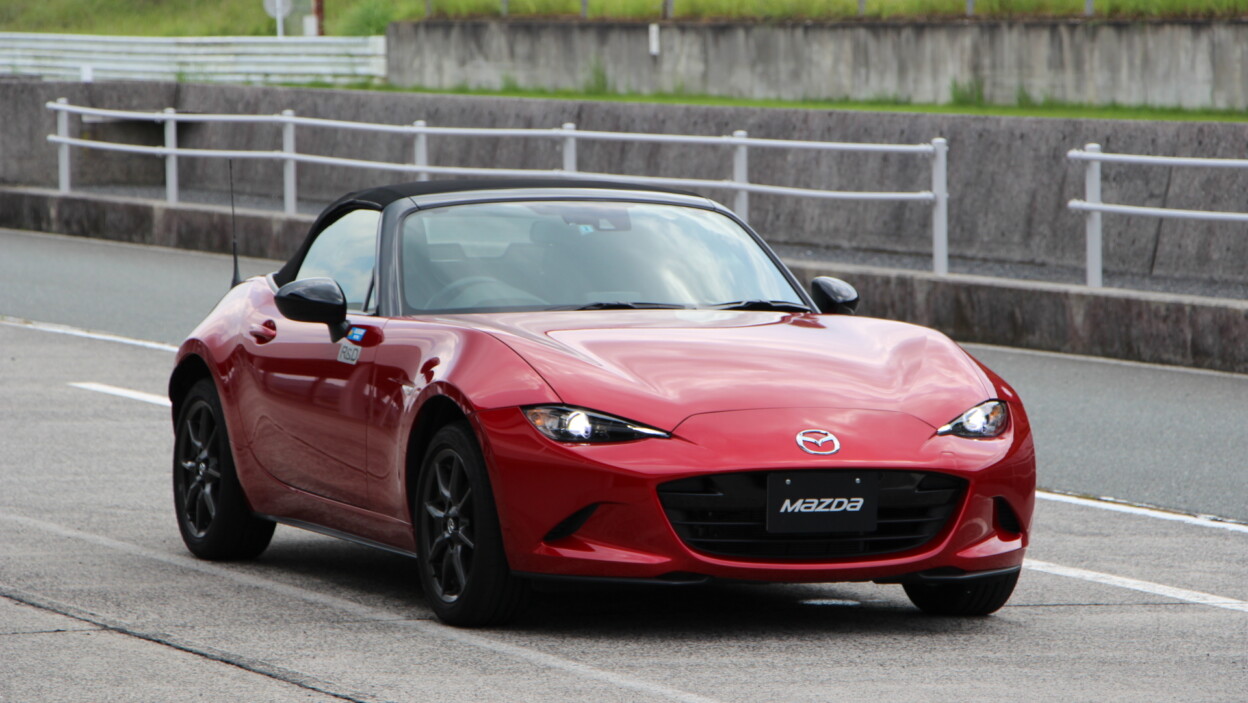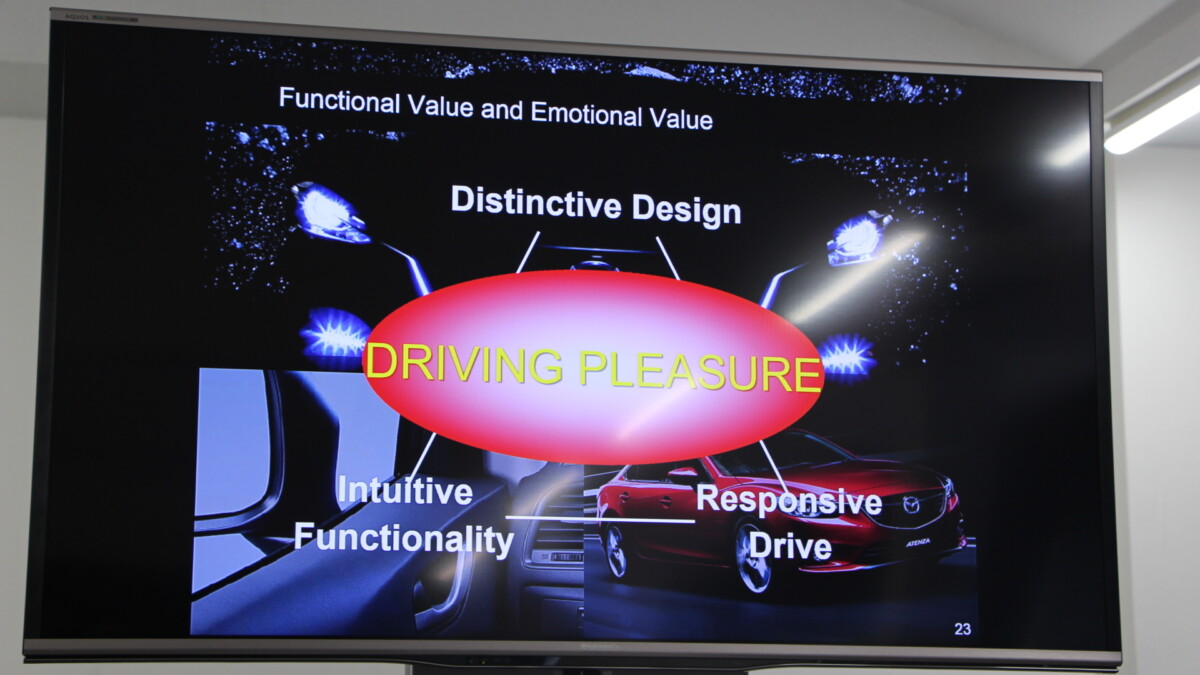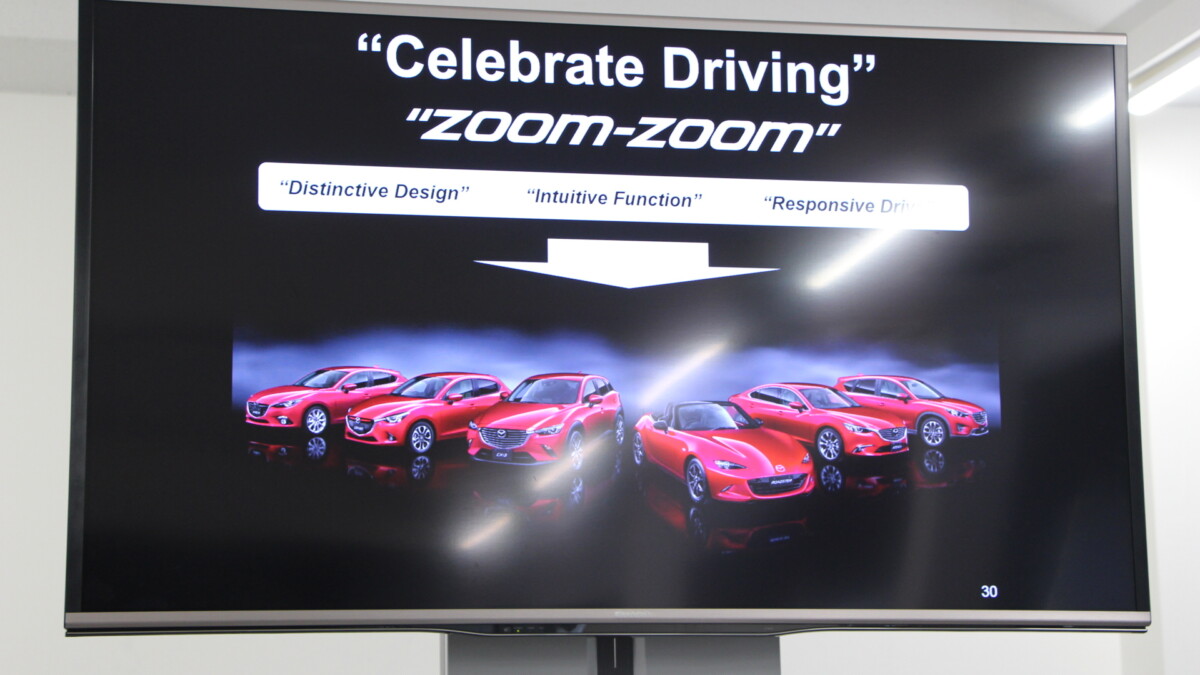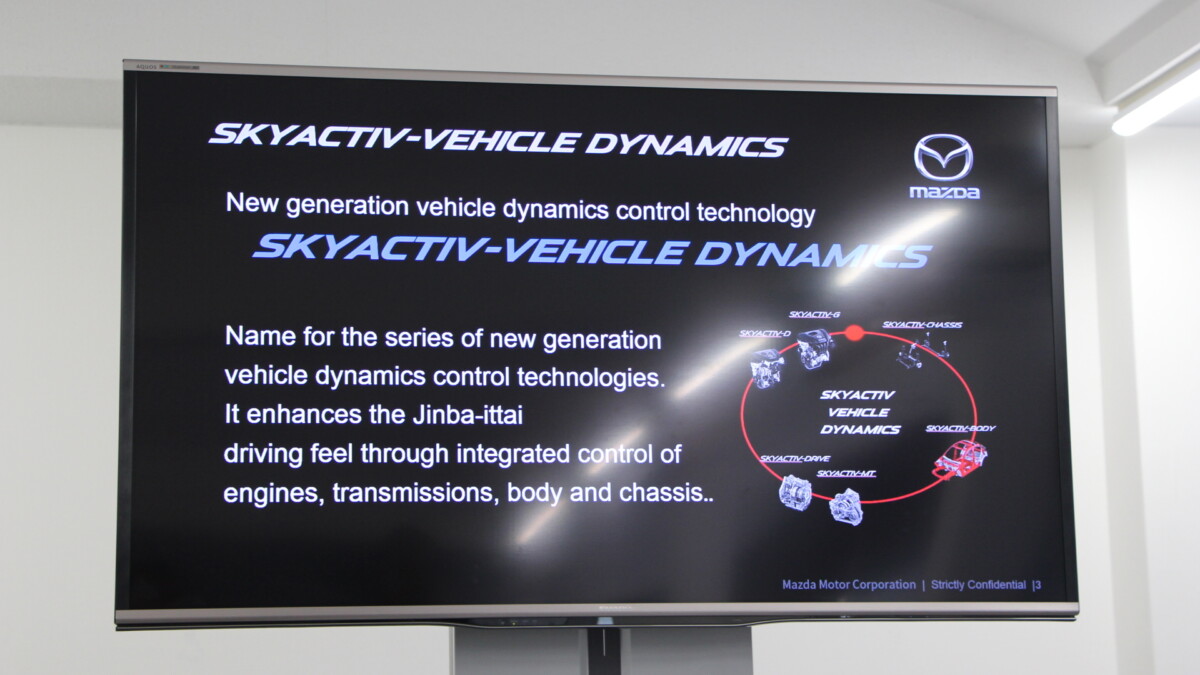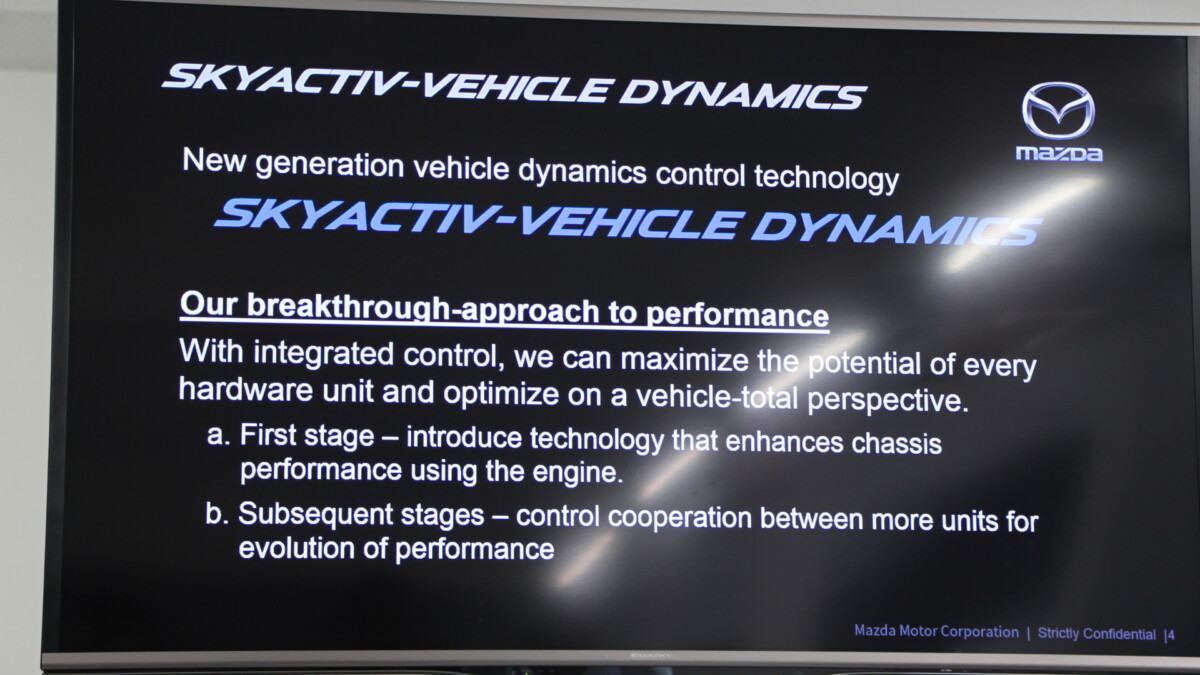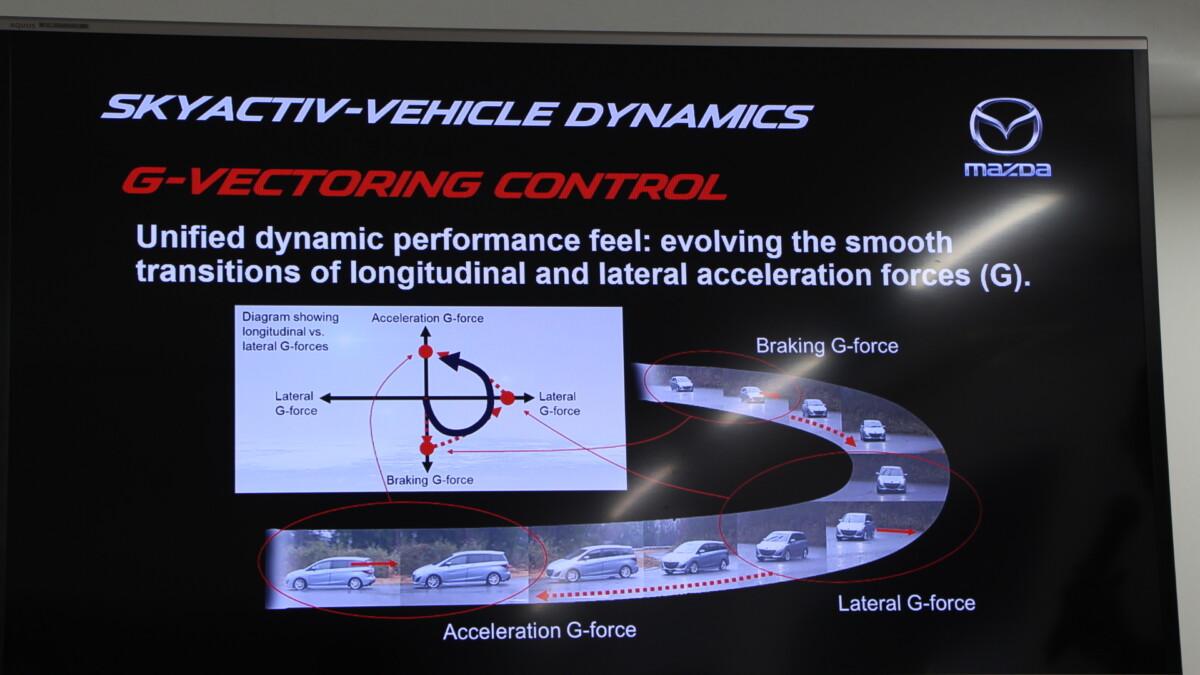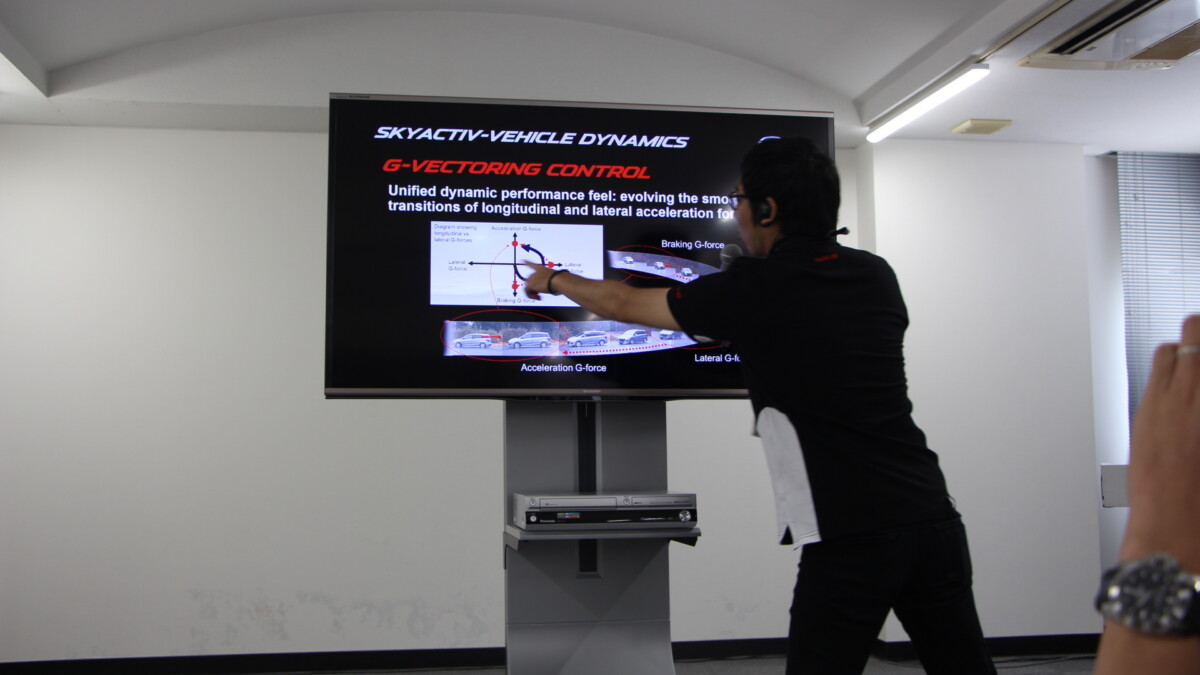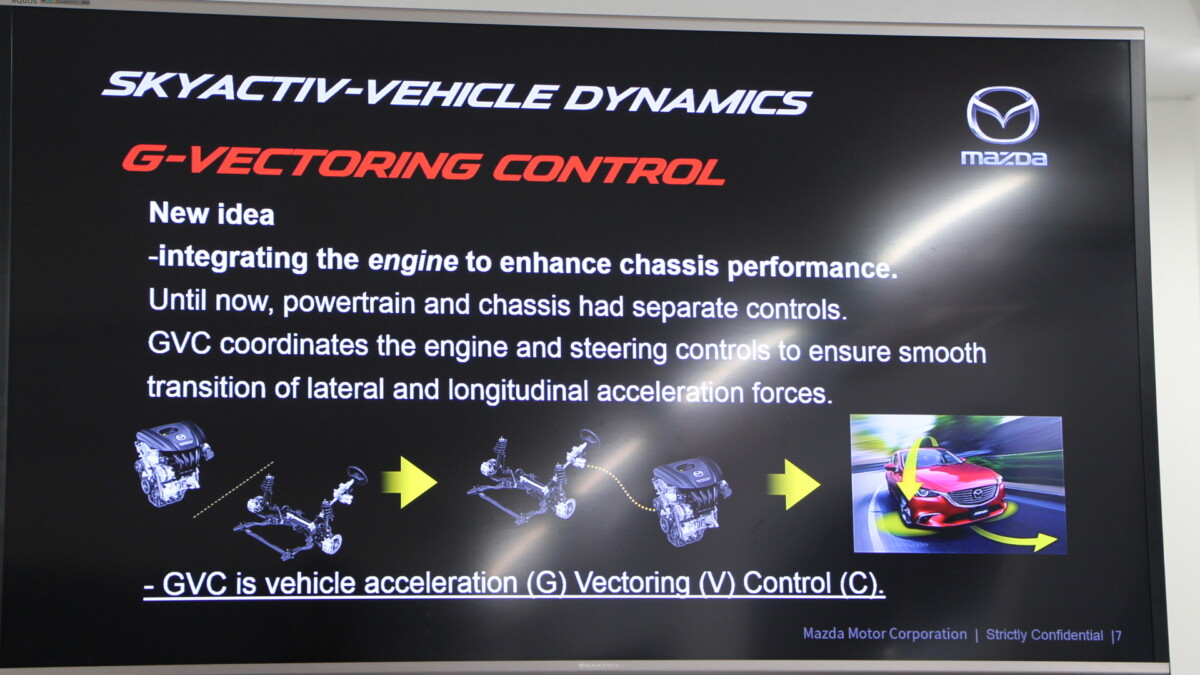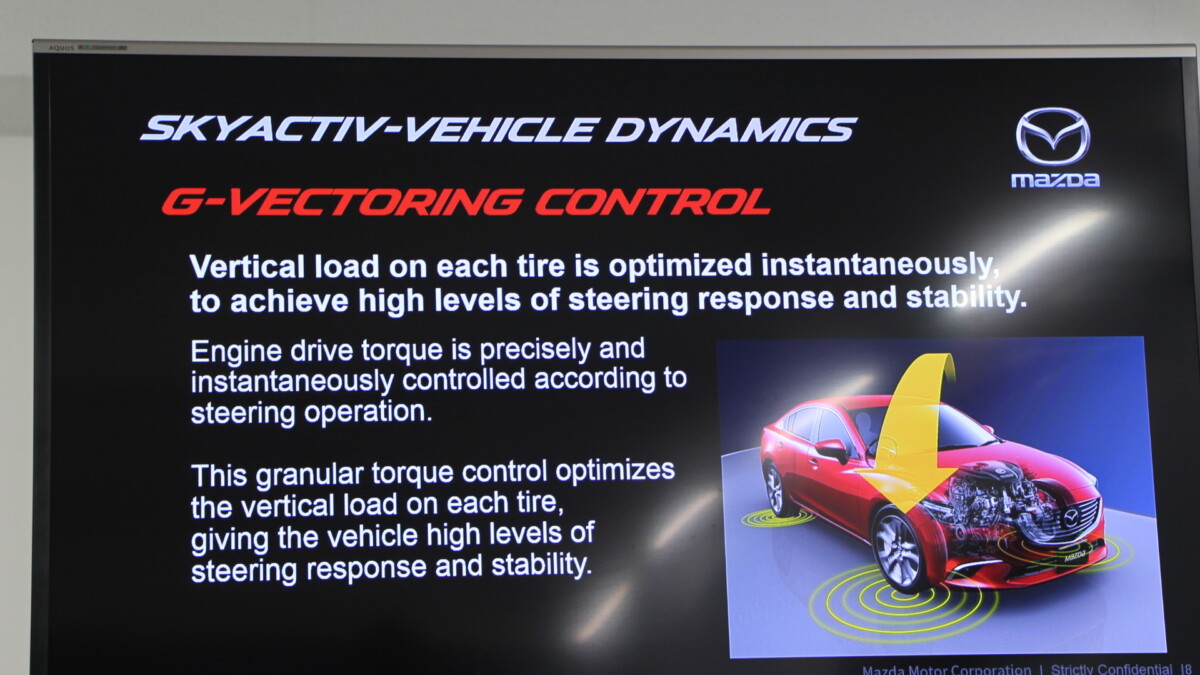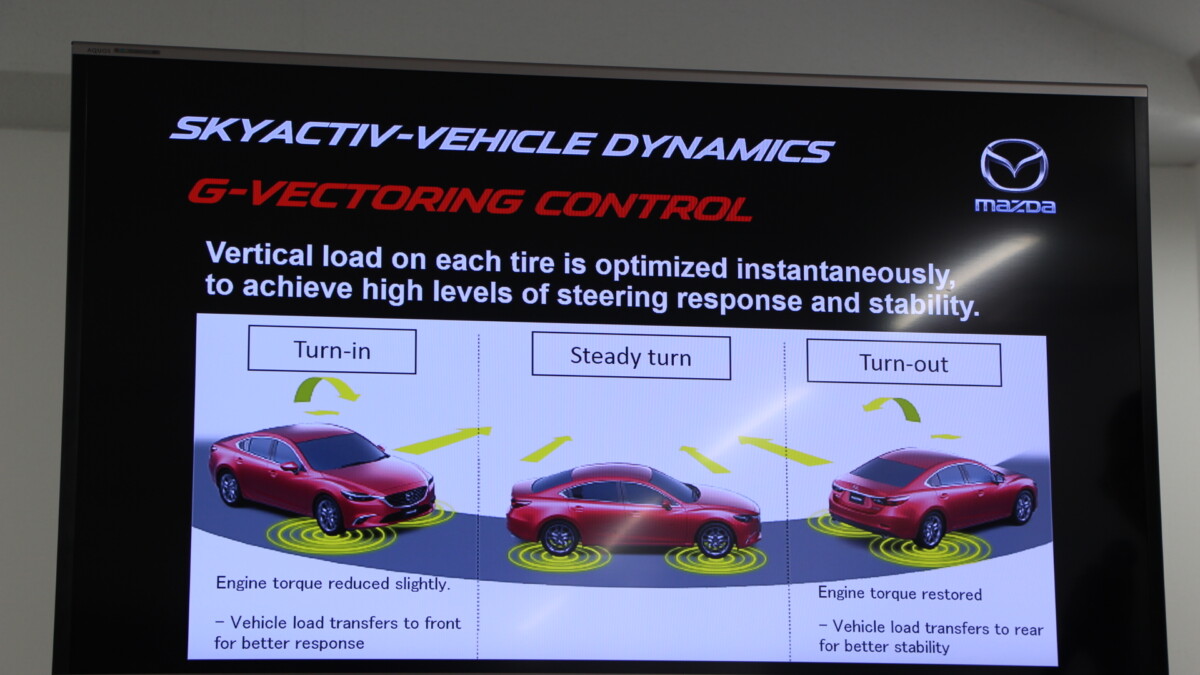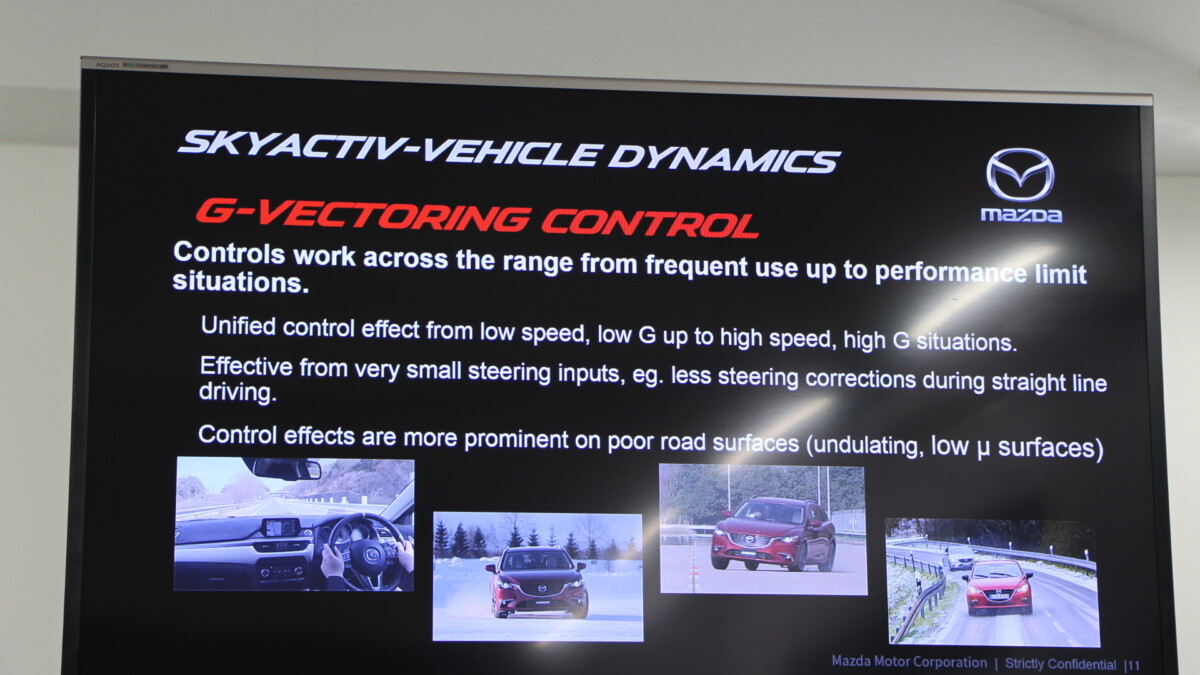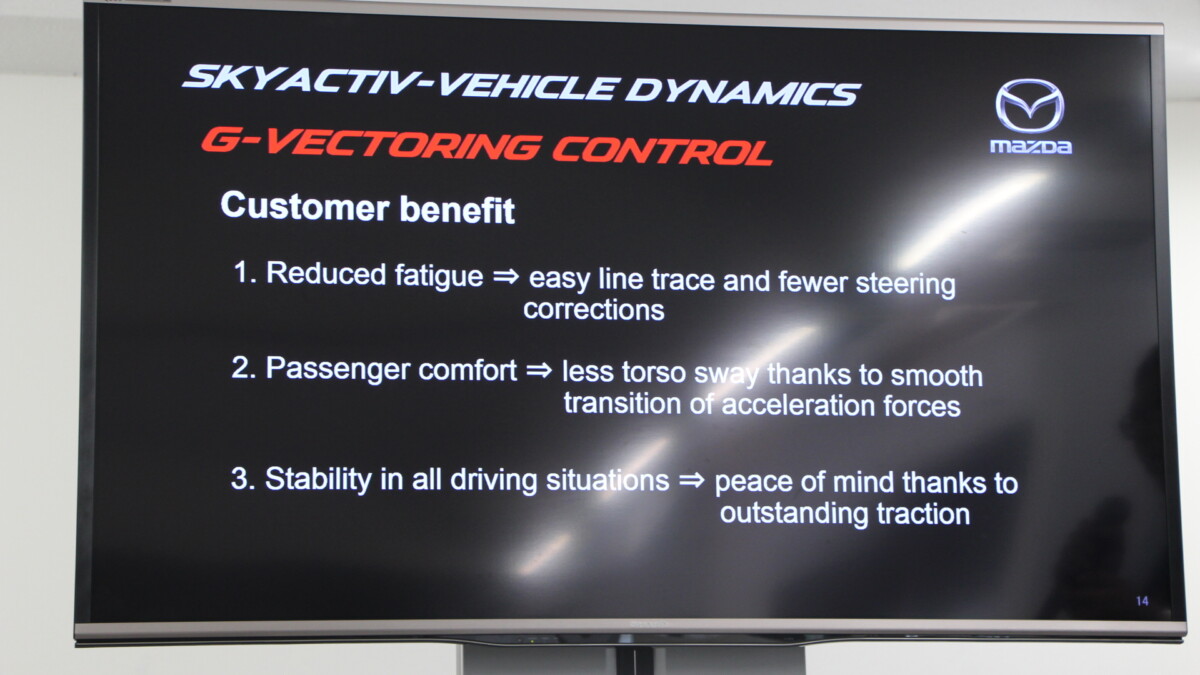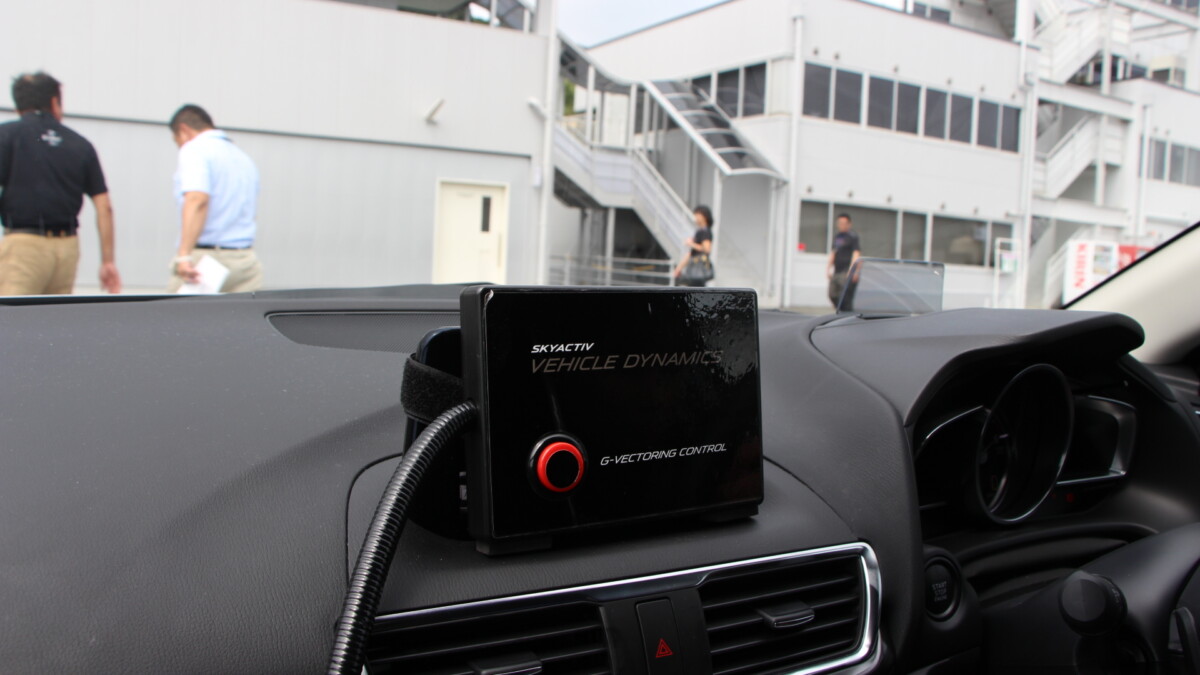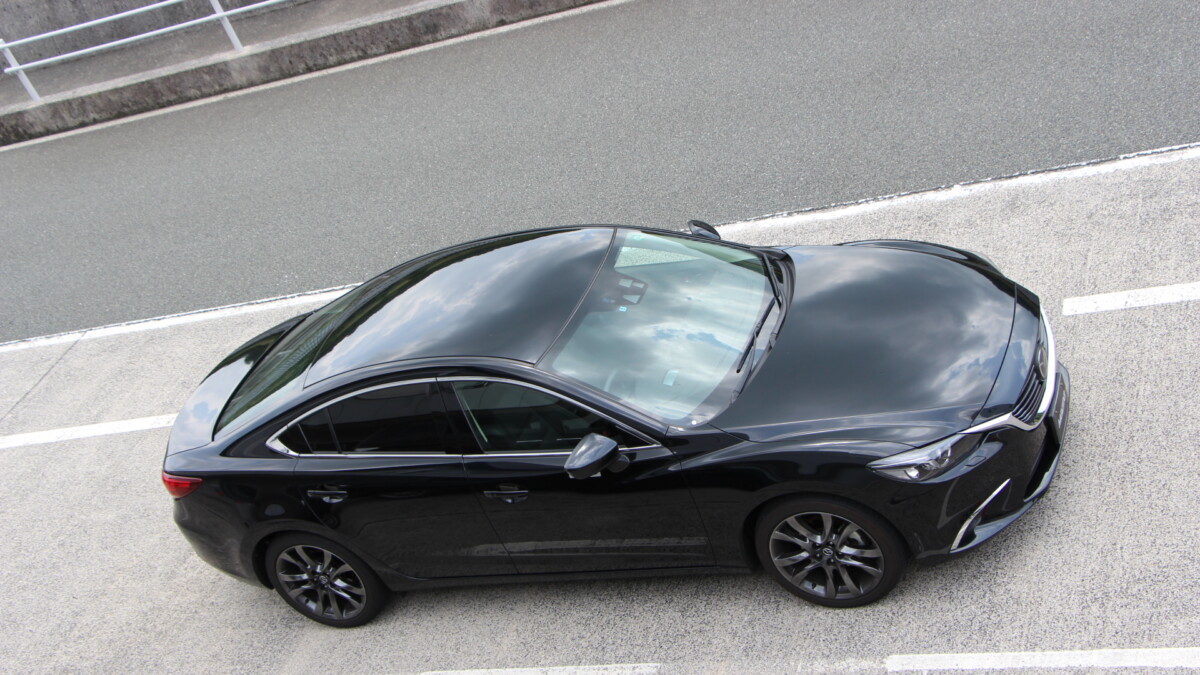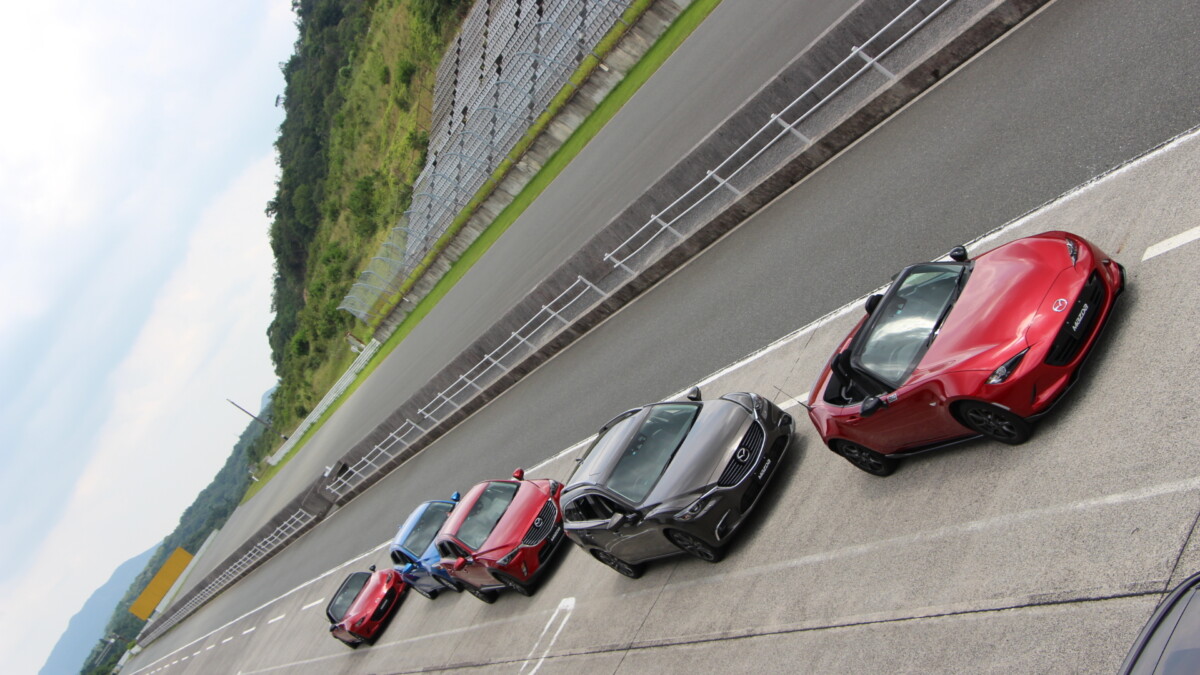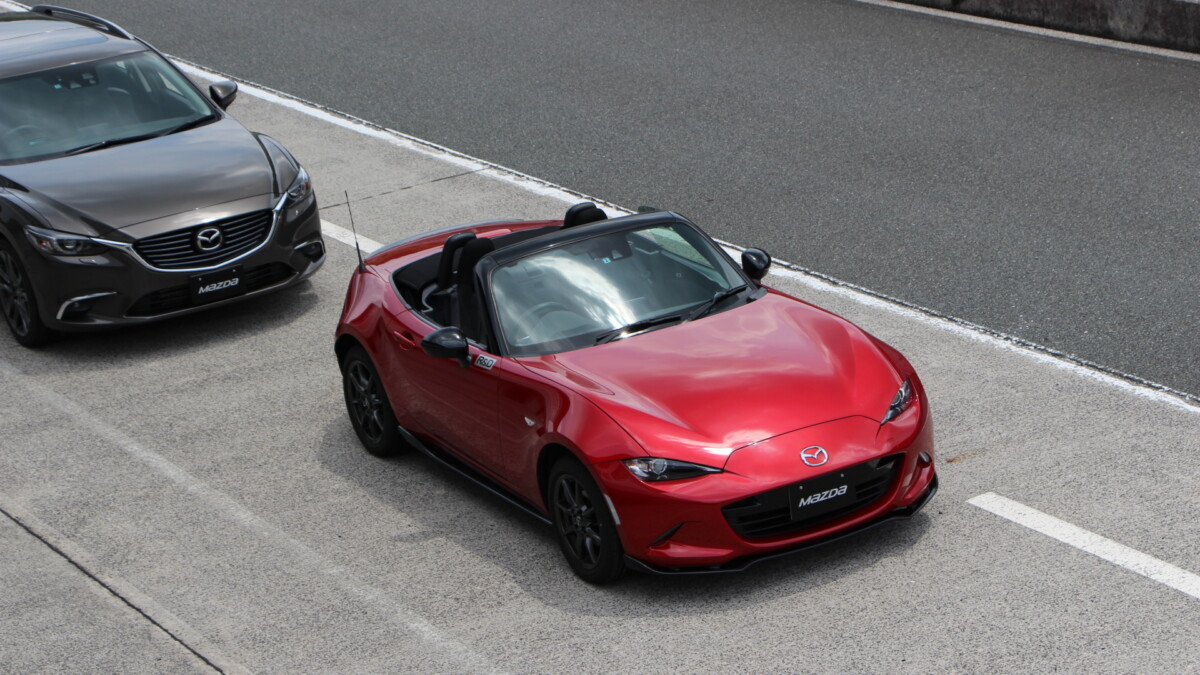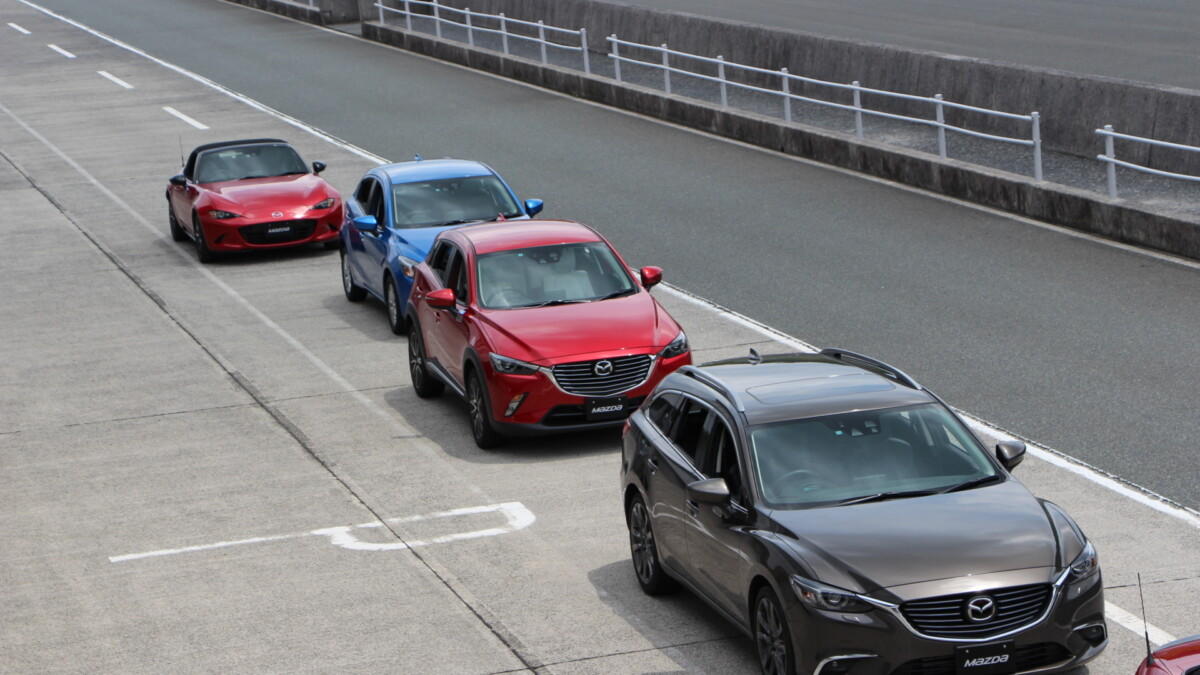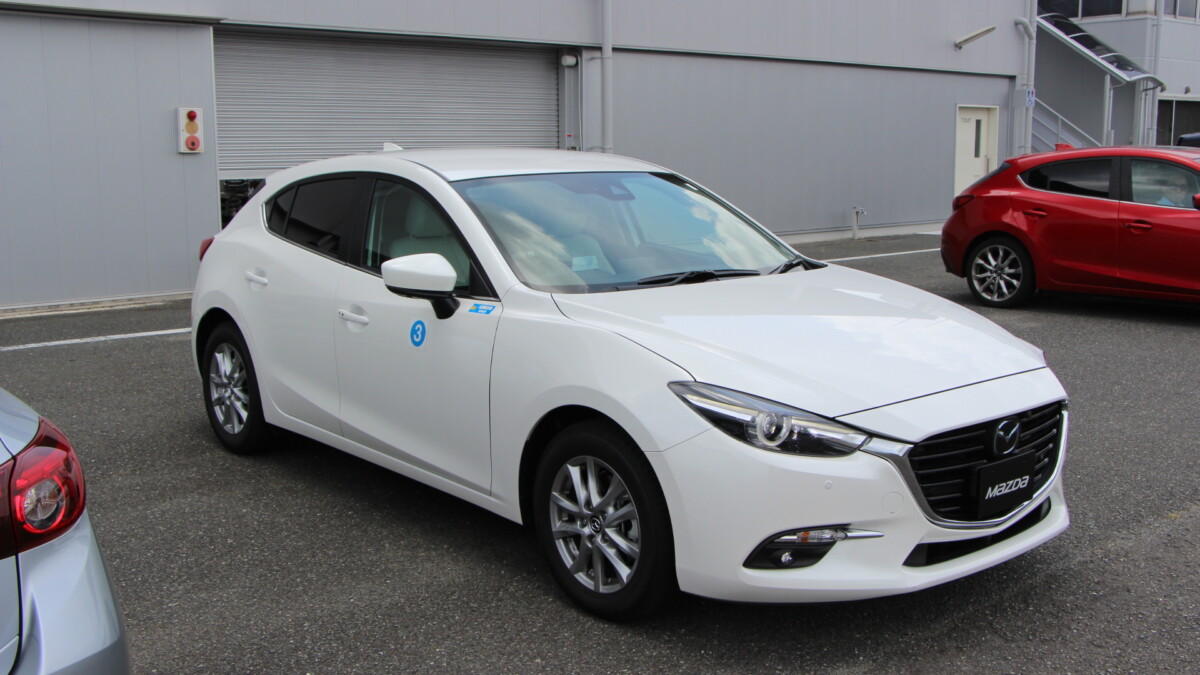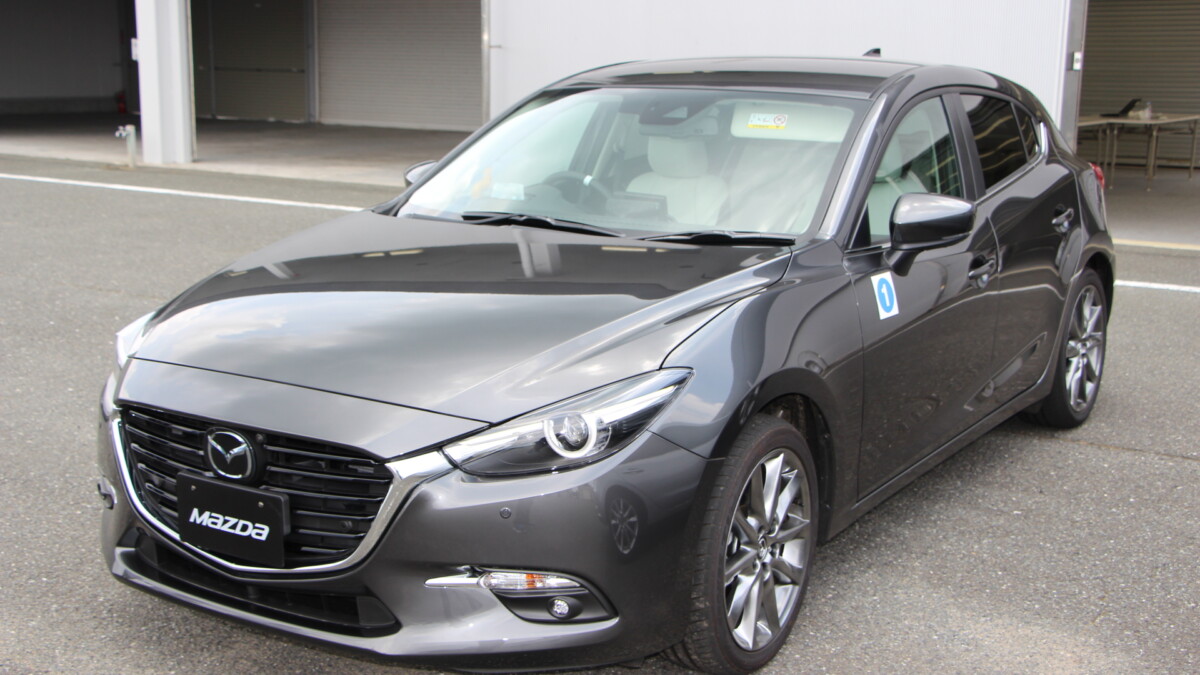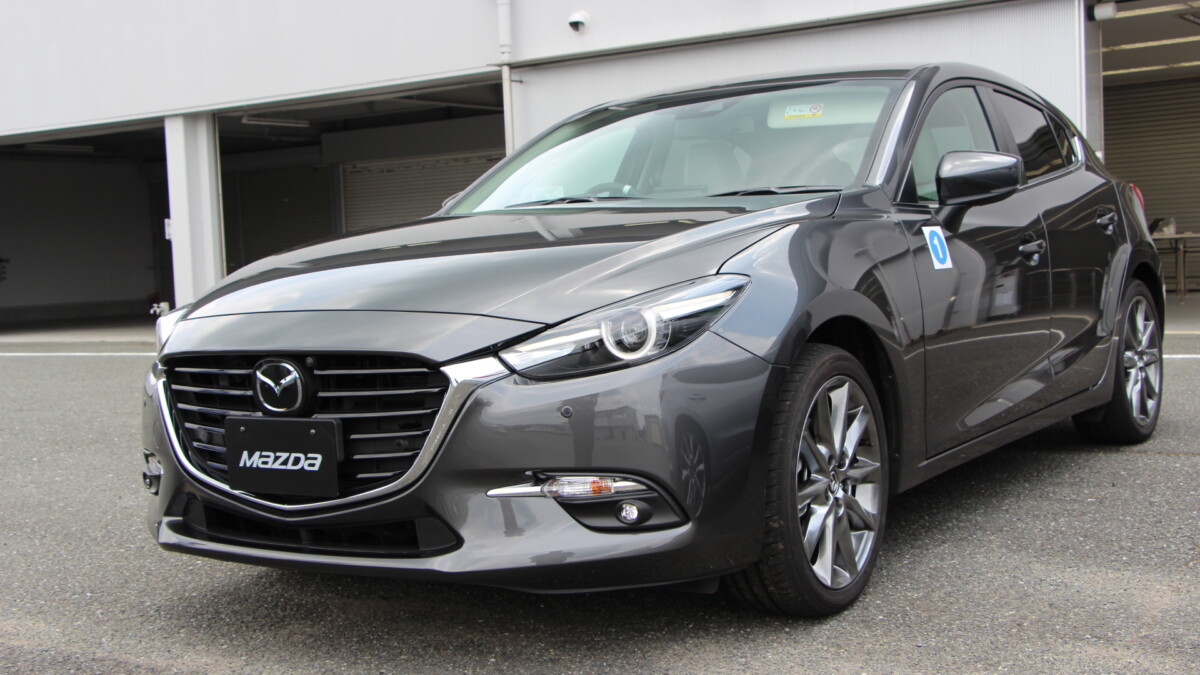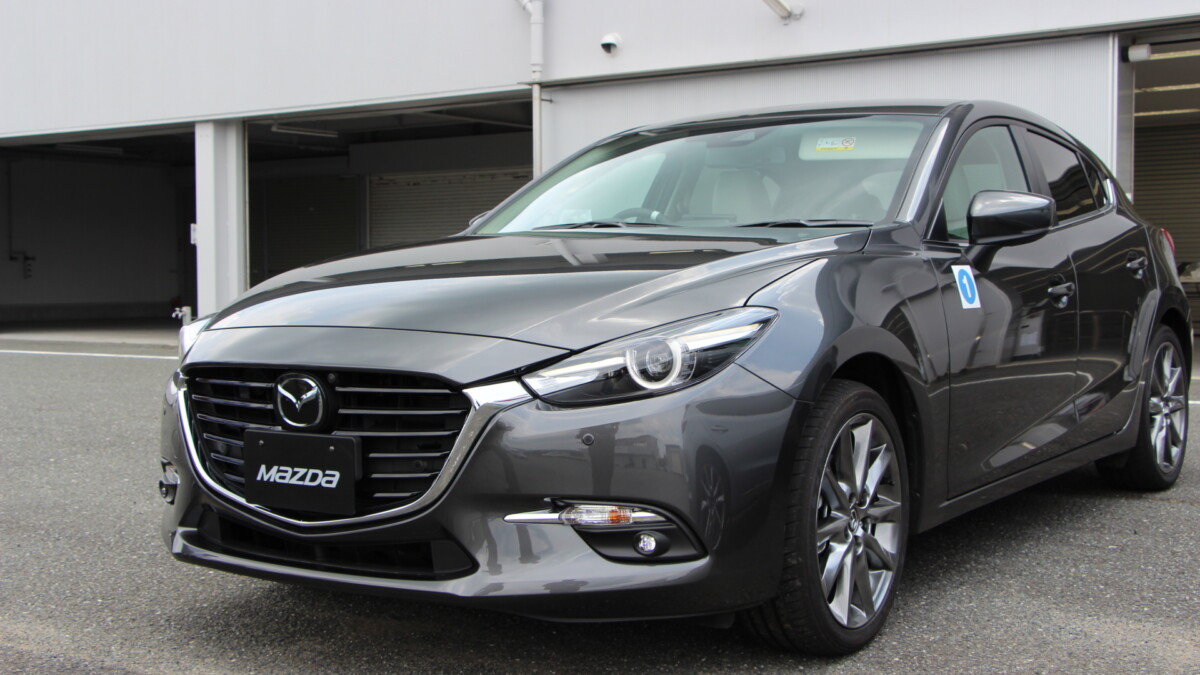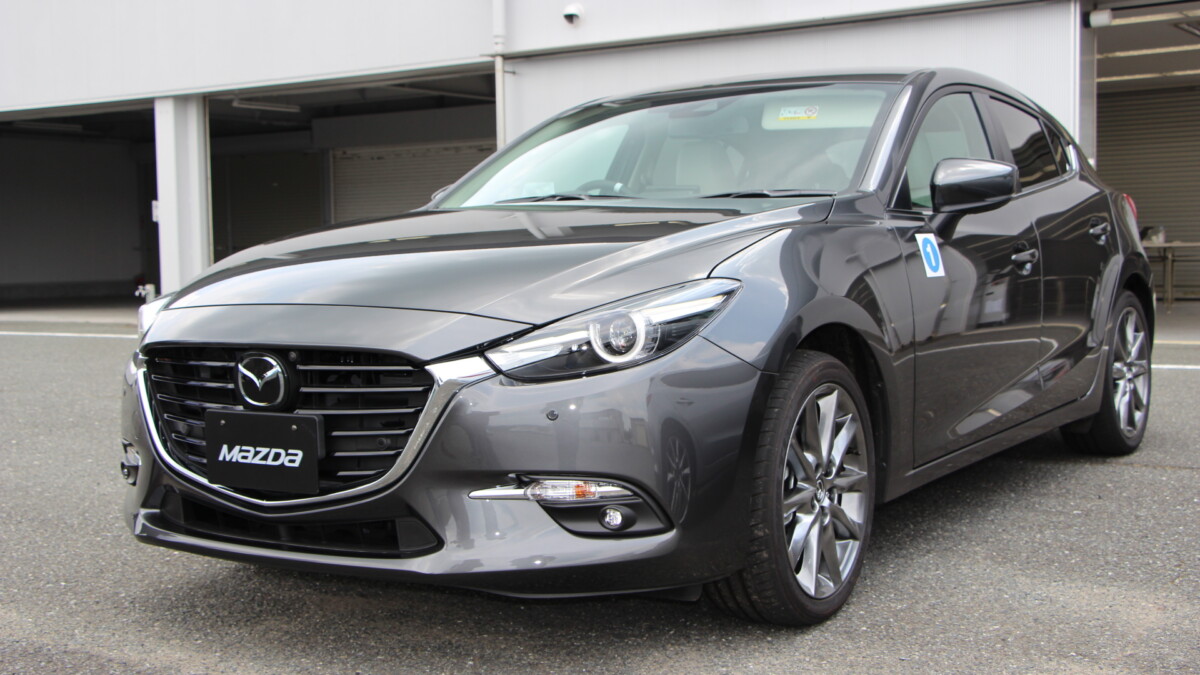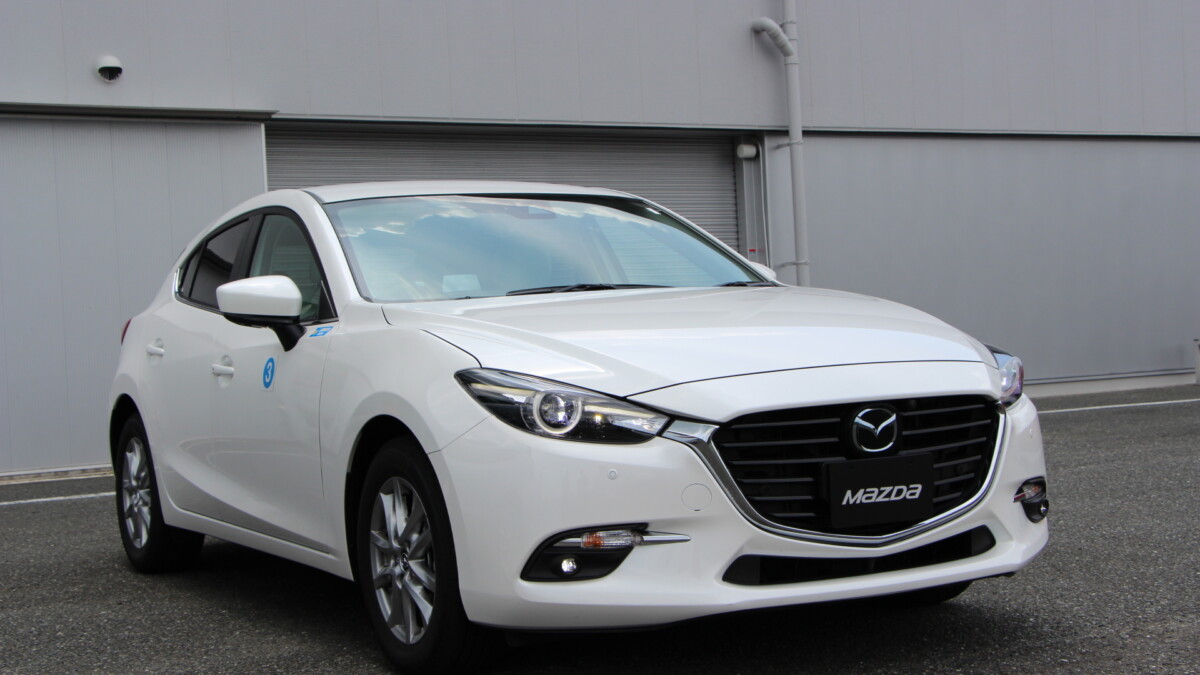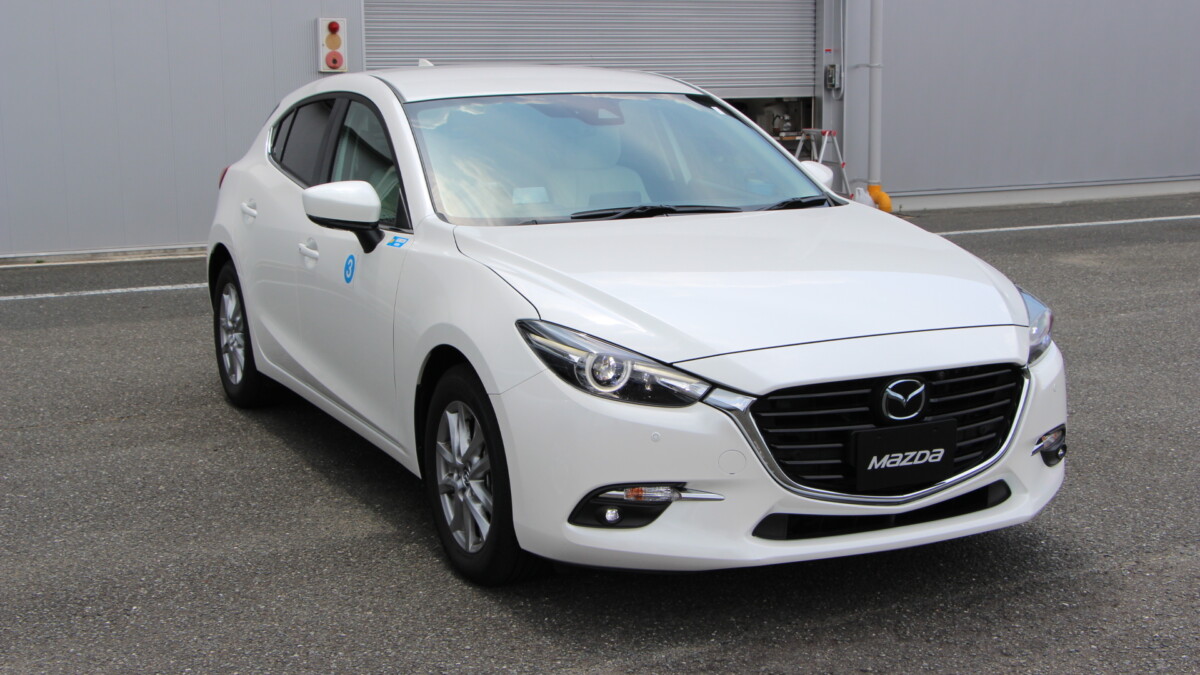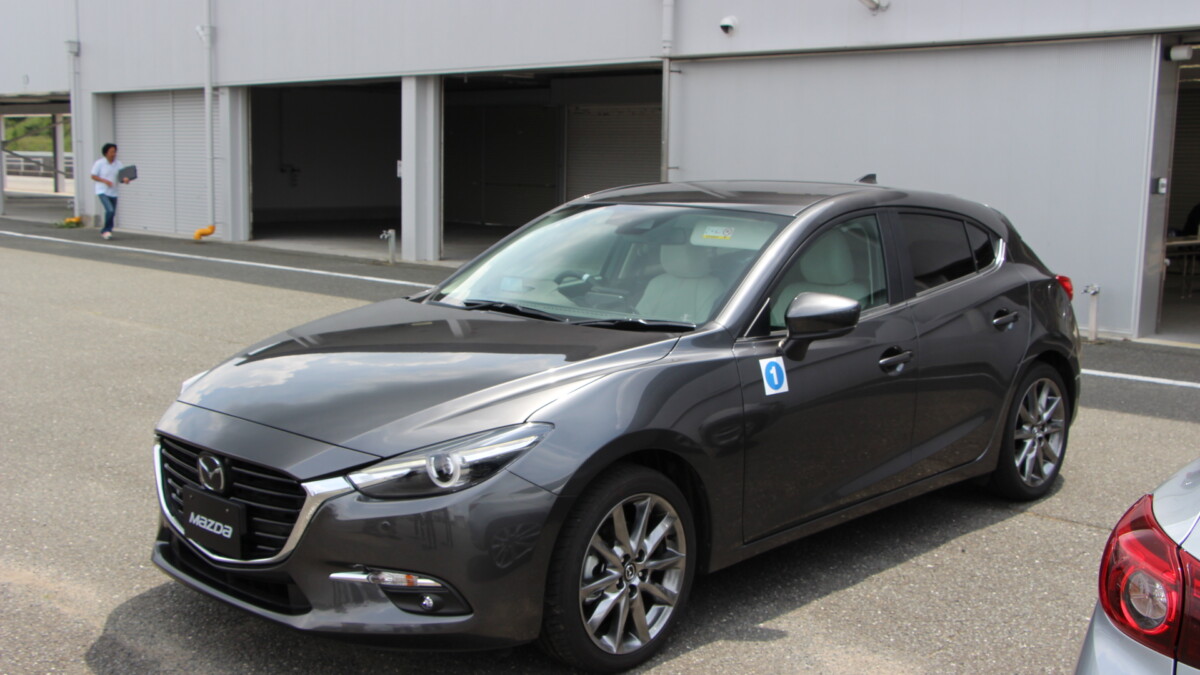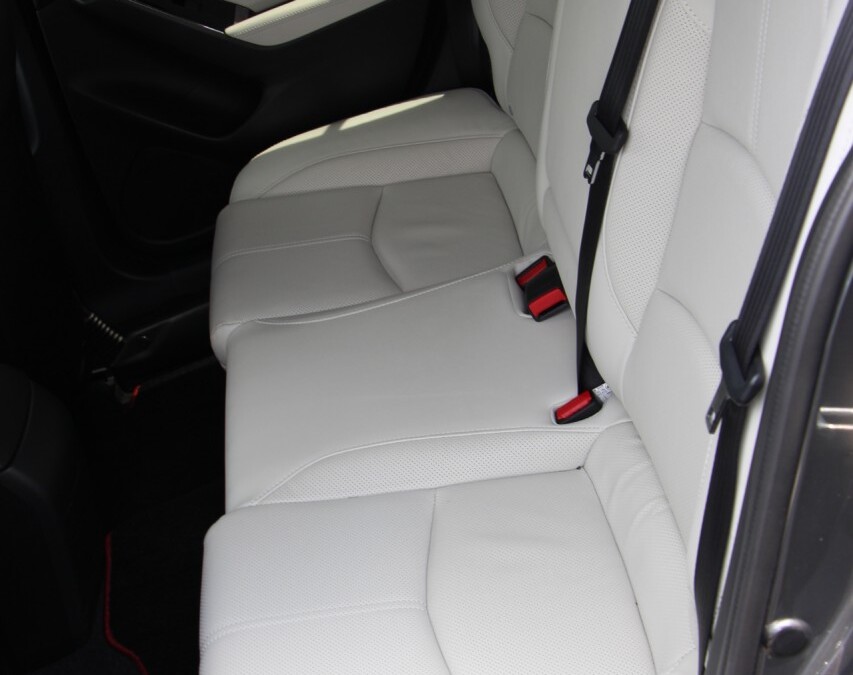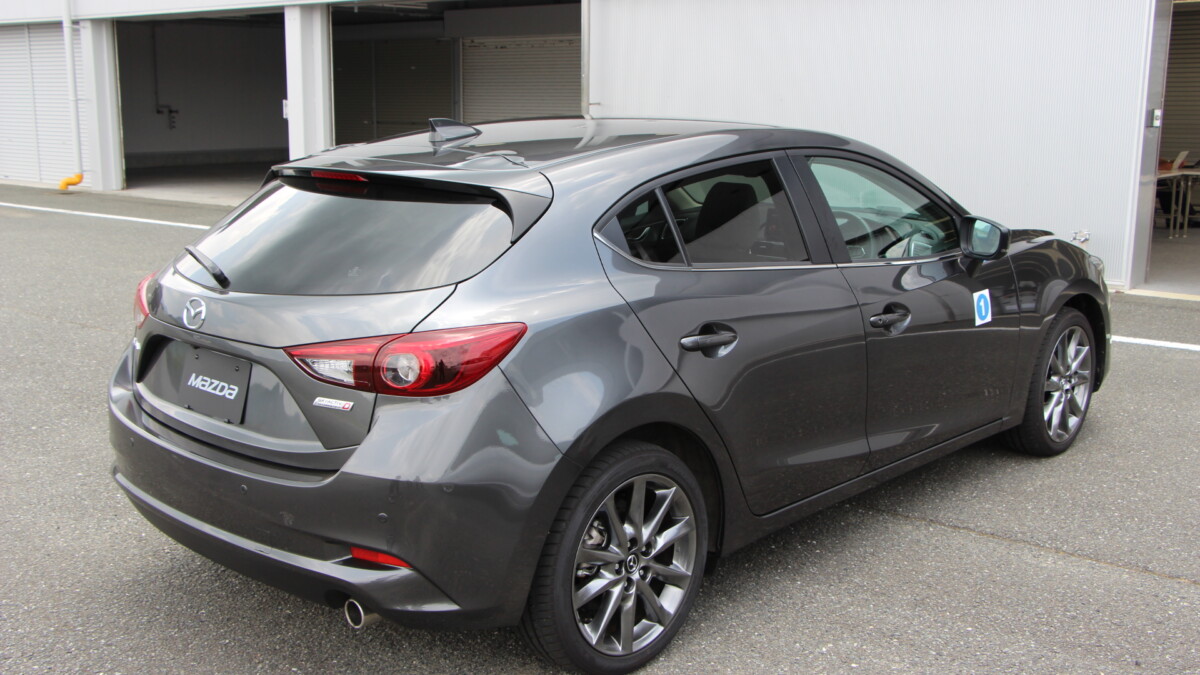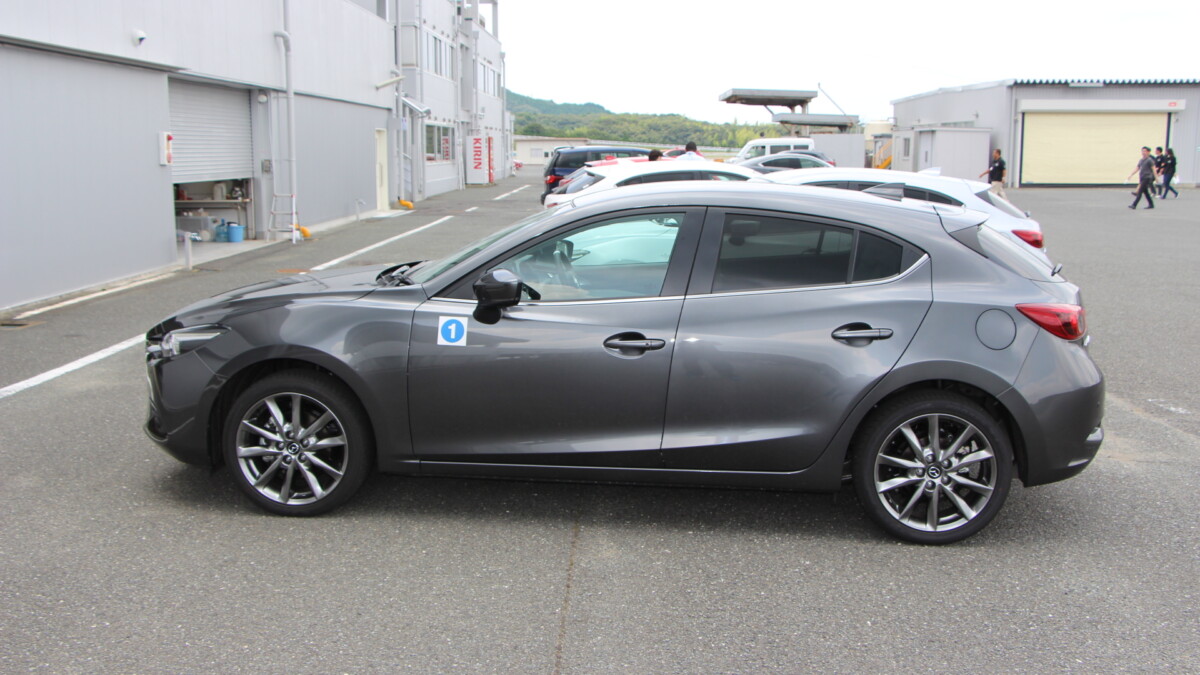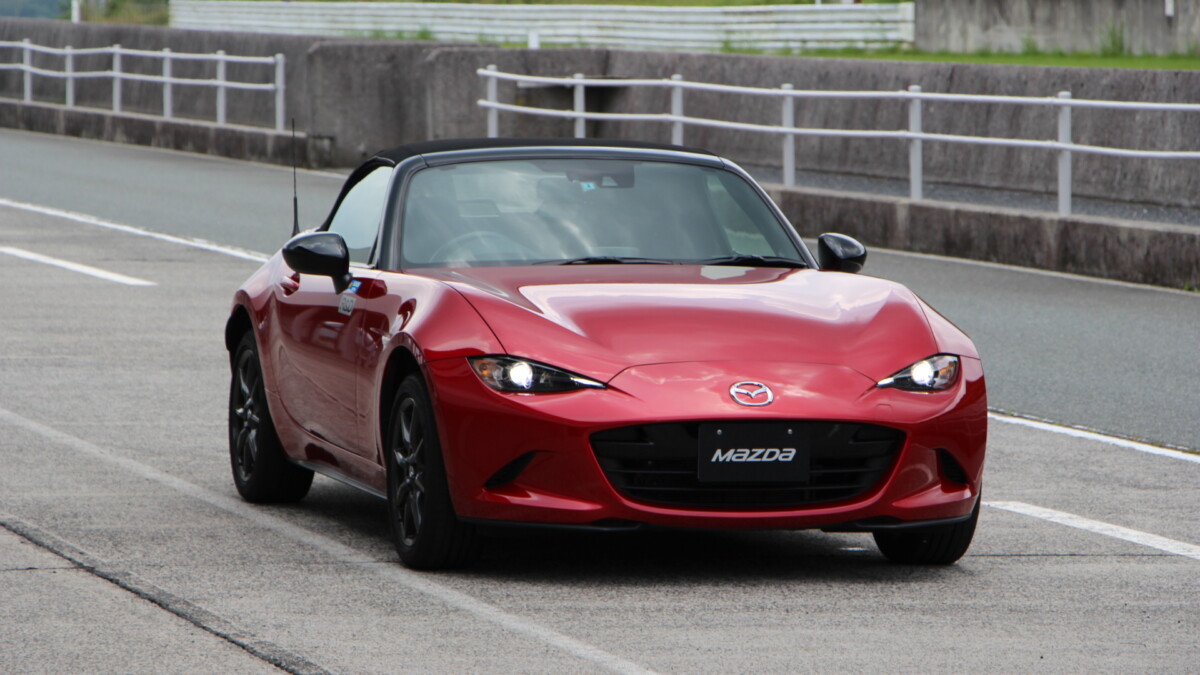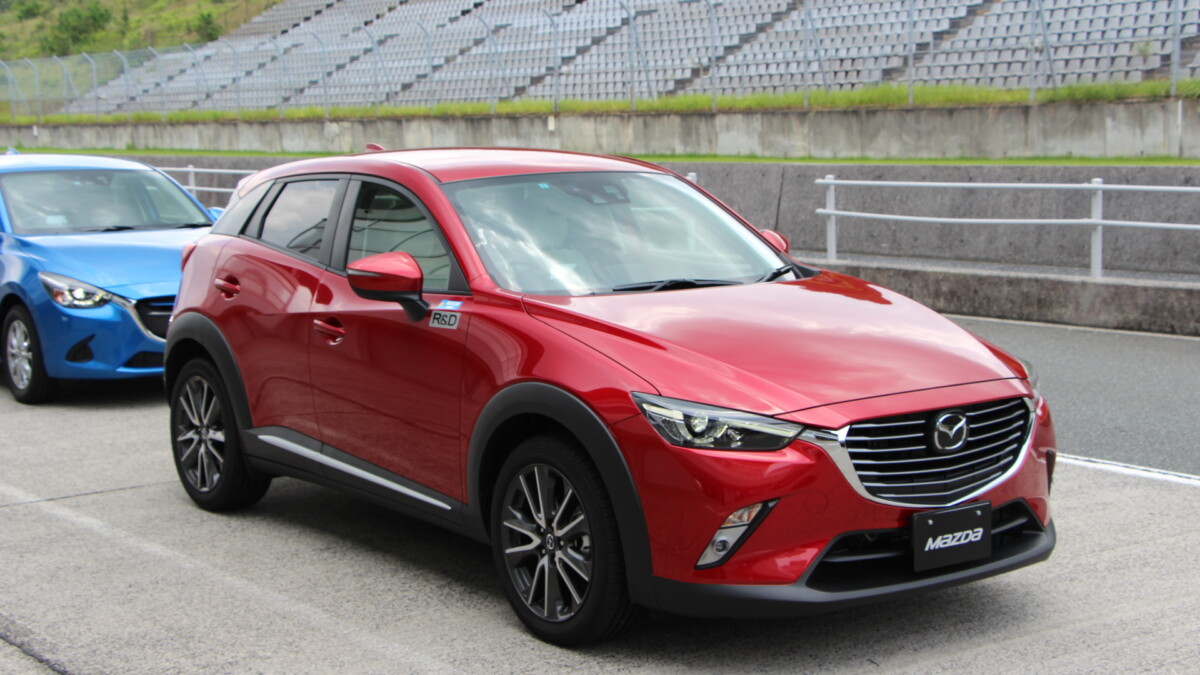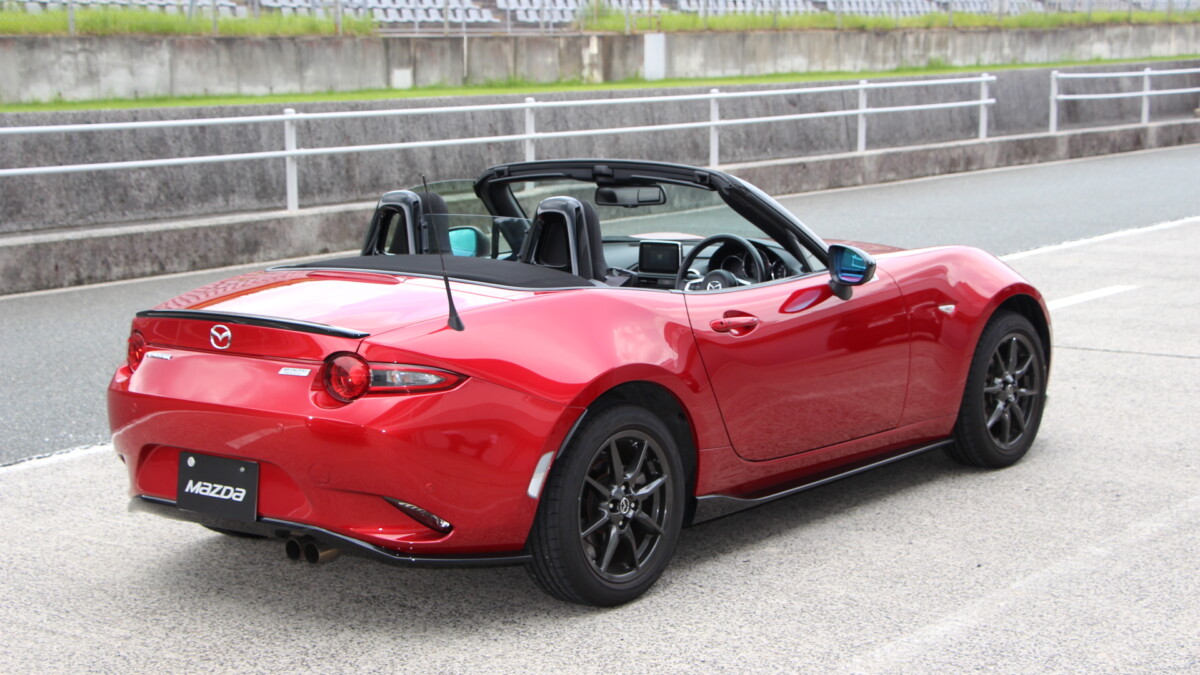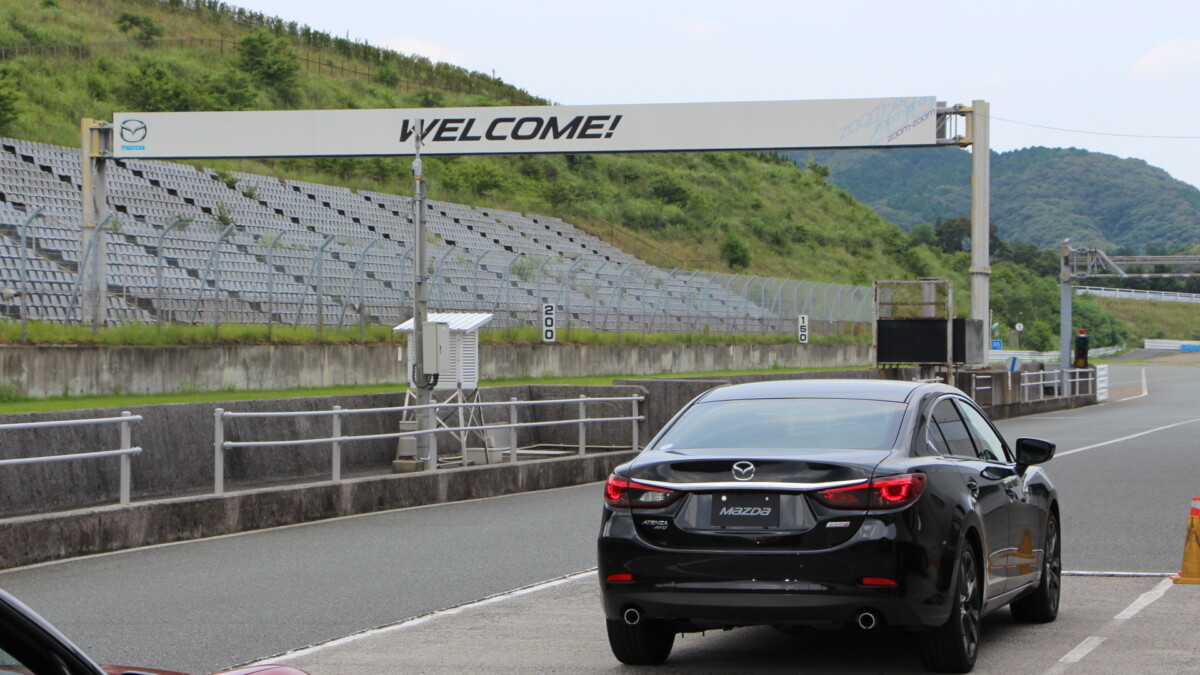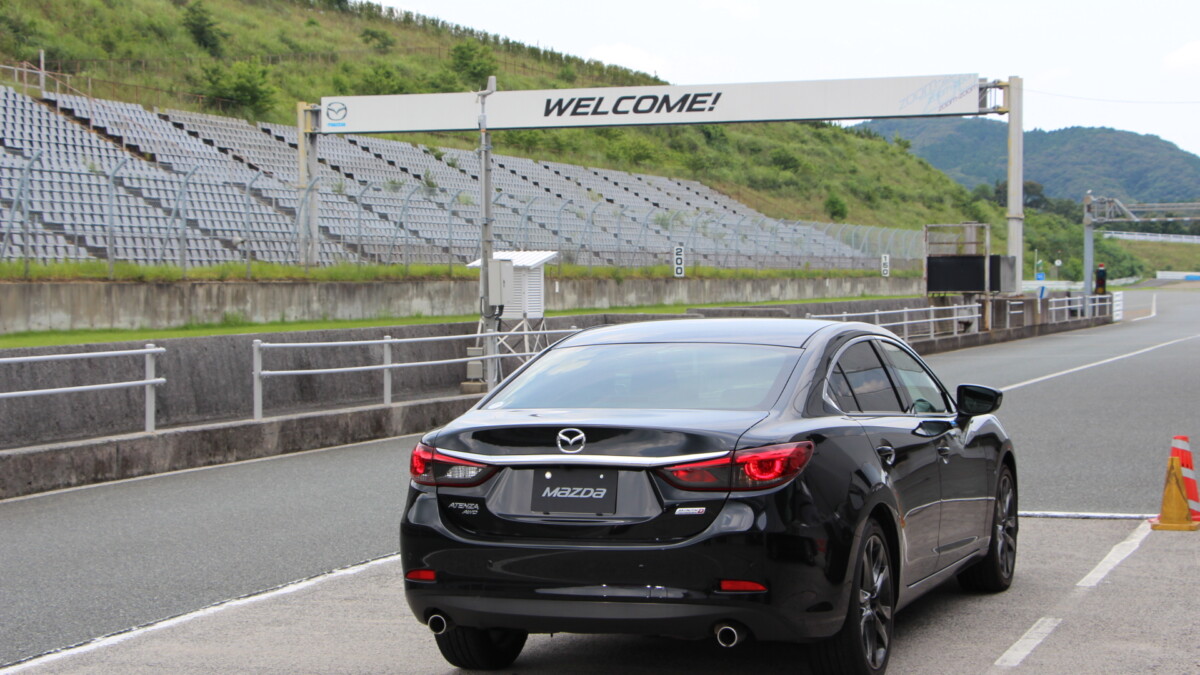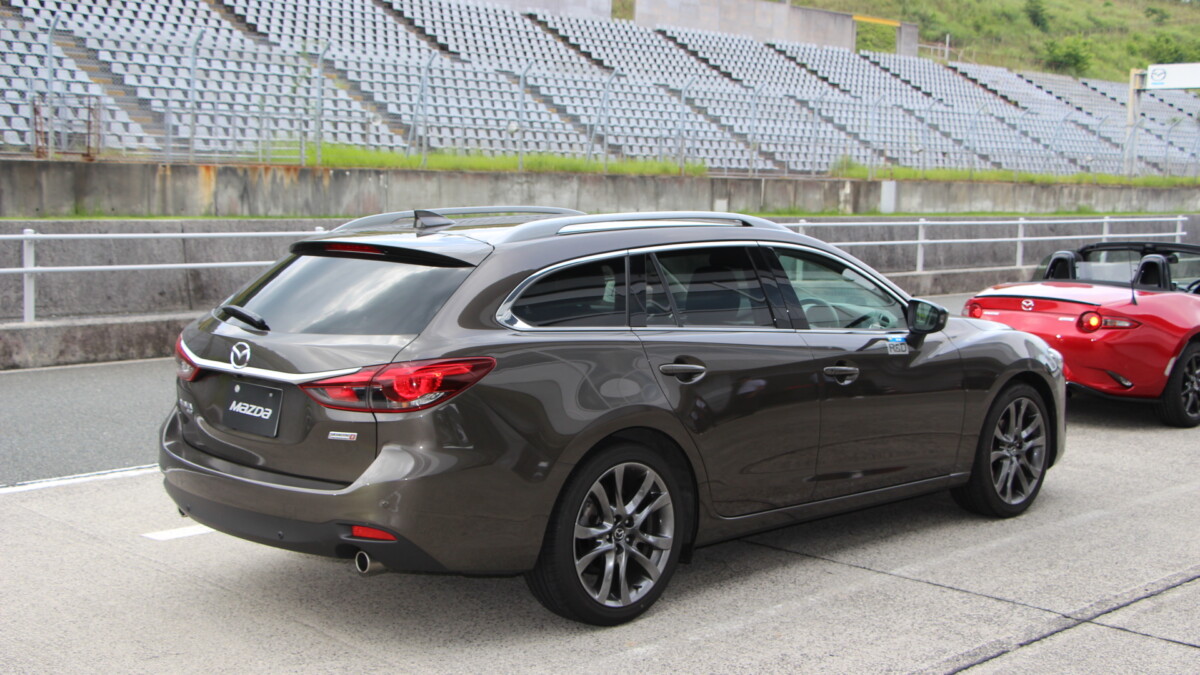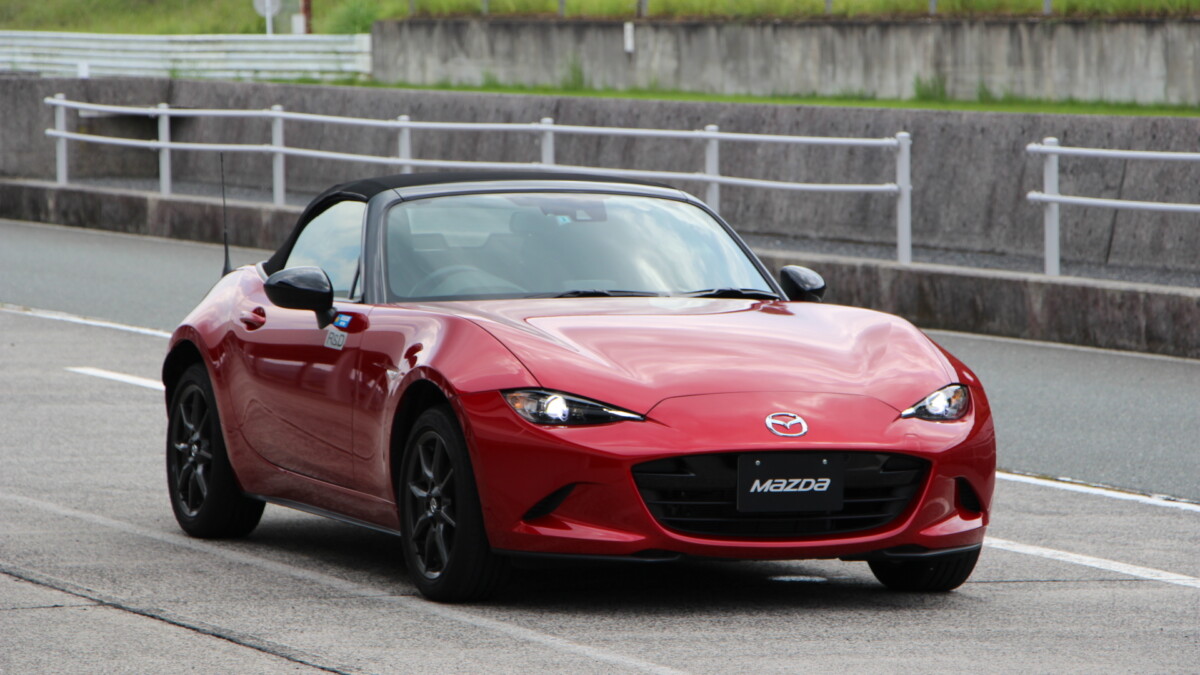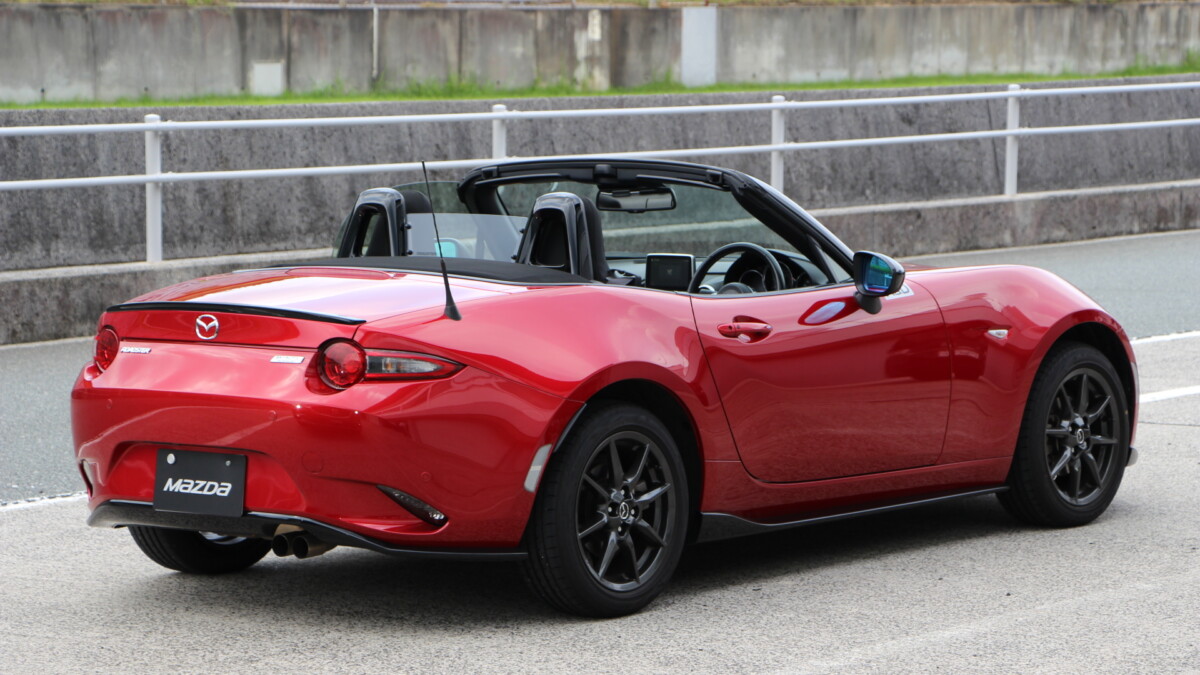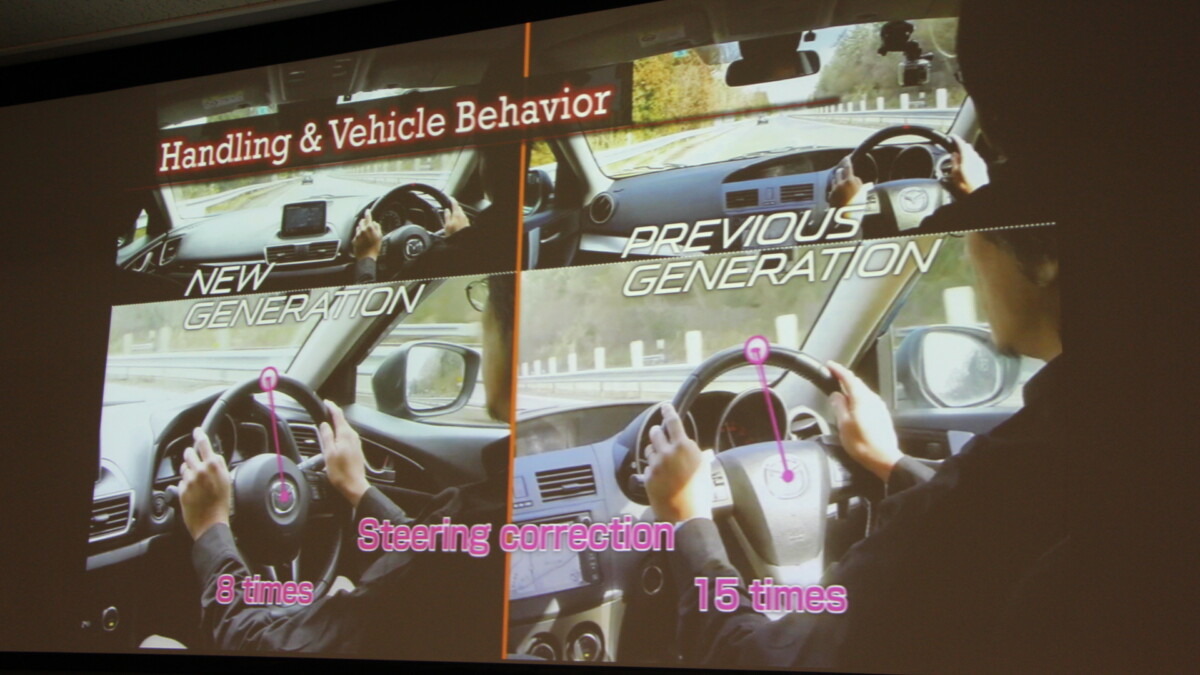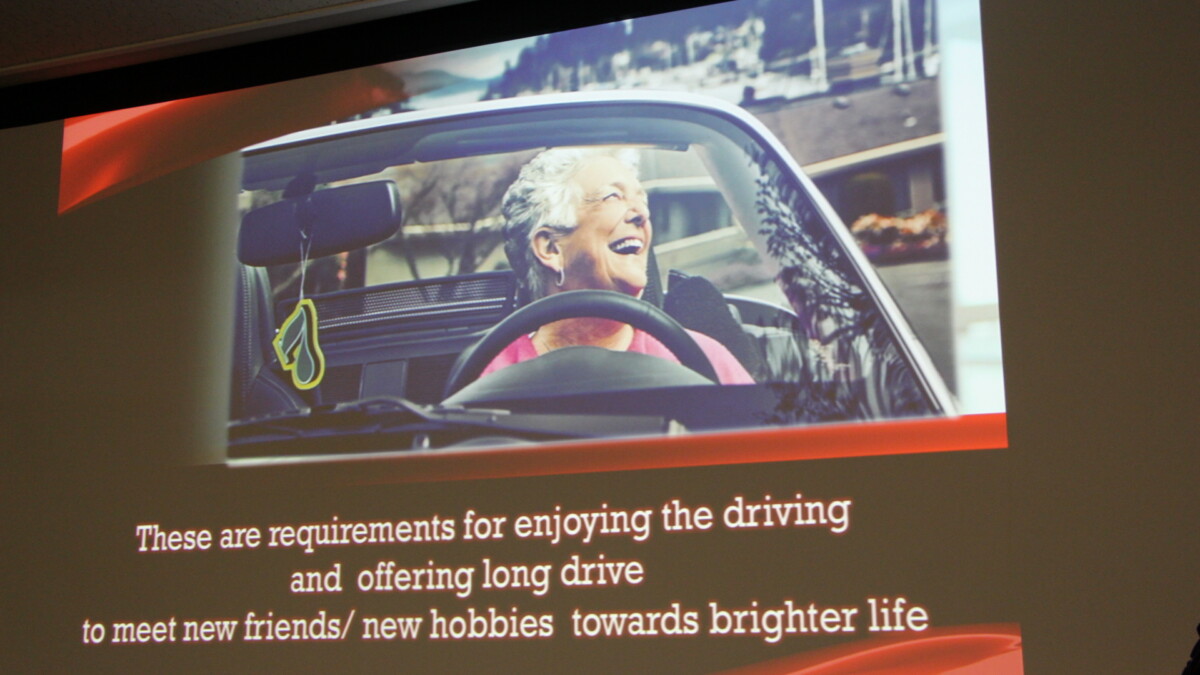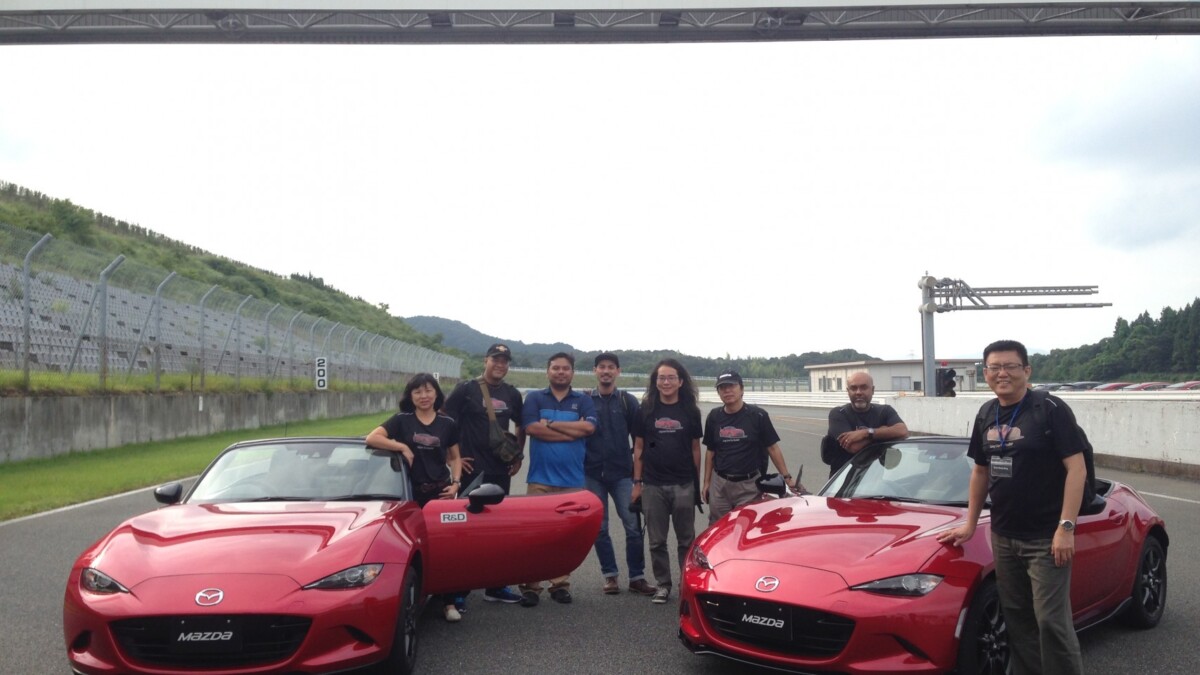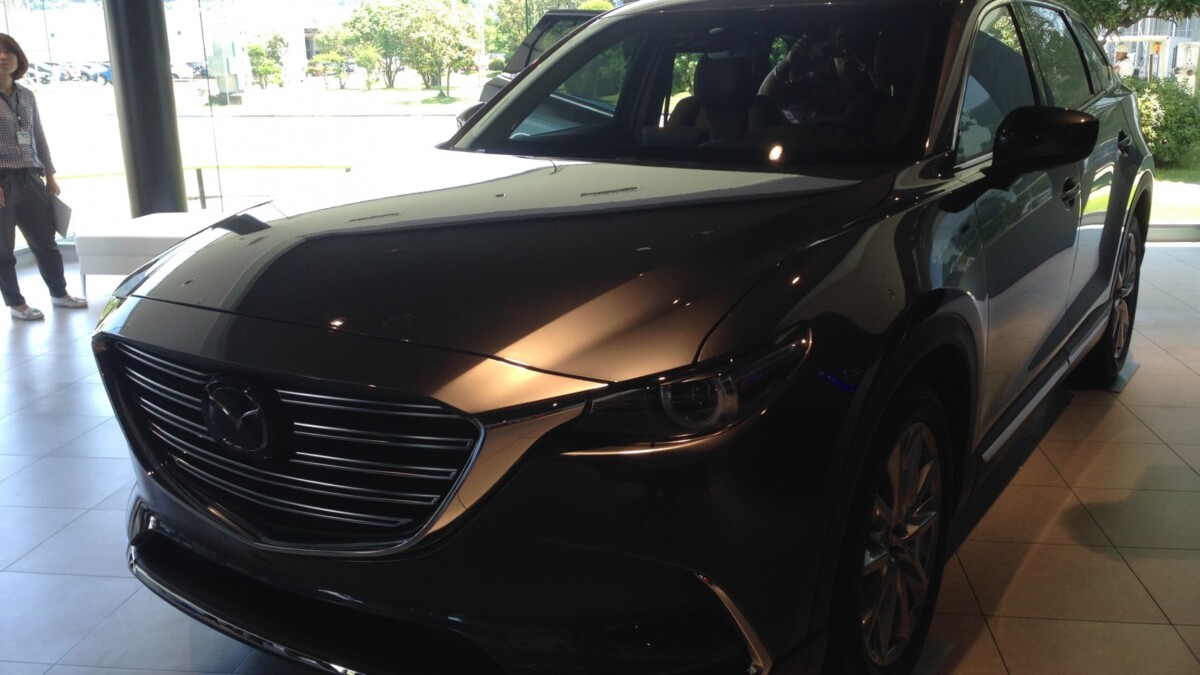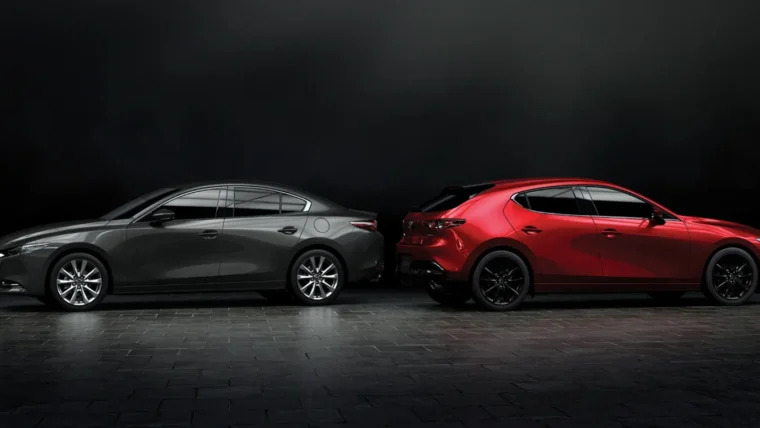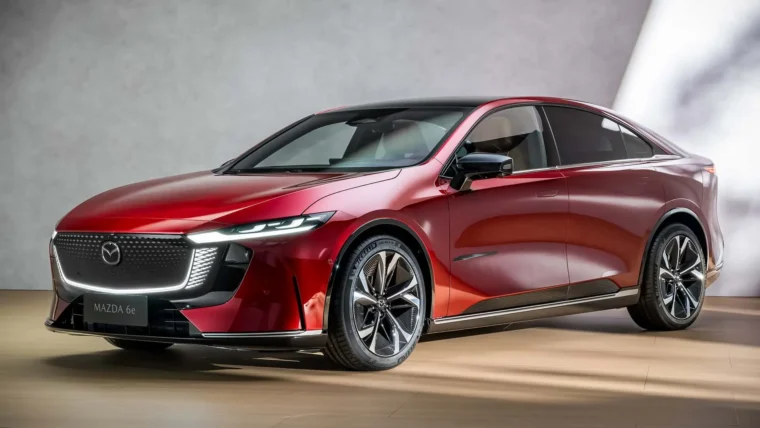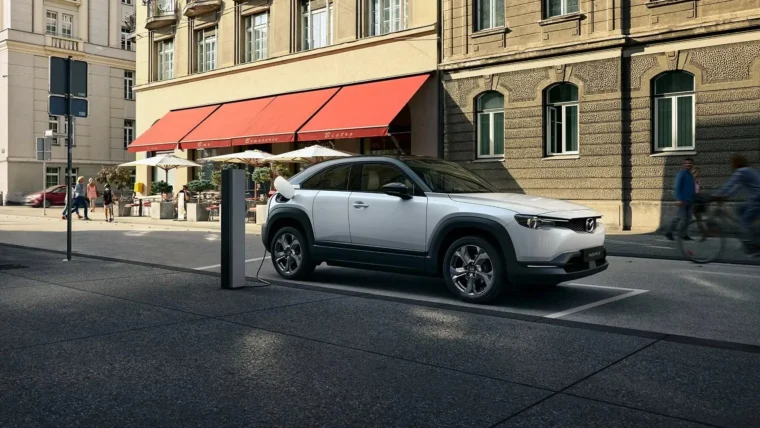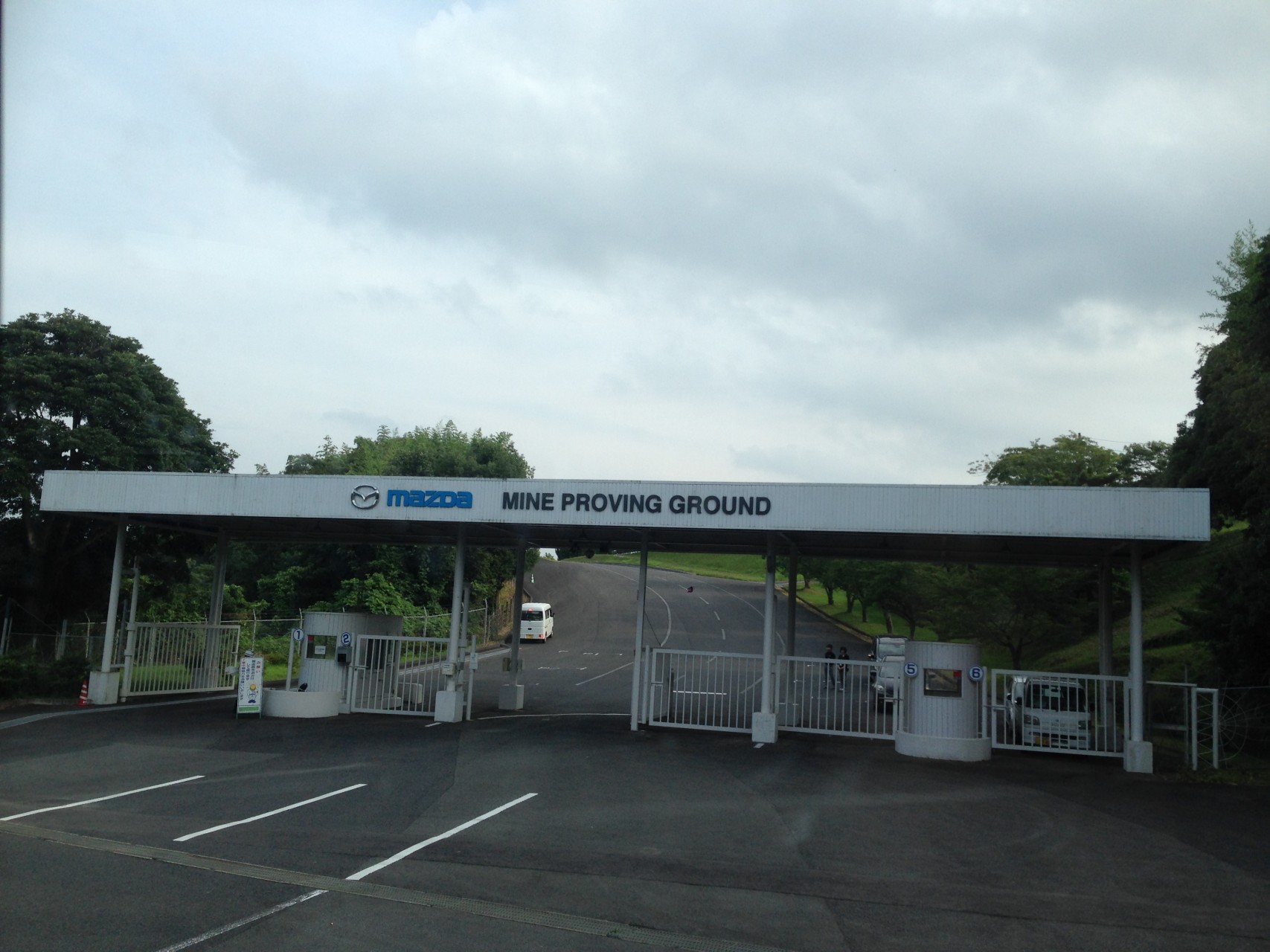
Initiative. Some companies have it, some don’t, and some just want you to think they do. It’s a funny thing really; why would a company invest a princely sum in sending a bunch of motoring journos all the way to Fukuoka, Japan, for three letters? Indeed, we would not be privy to any new / concept models, there’d be no ground-breaking scoops to be had, instead, we’d be witnesses to what’s quite possibly the most marked revolution in driving dynamics since Mazda unleashed its infamous rotary engine so many moons ago. And it’s all from something they refer to as “Jinba-Ittai”. It involves horses…no, really.

1. JINBA – ITTAI: So what EXACTLY is Jinba-Ittai? In not so many words, “Mazda is aiming to offer vehicles that provide driving pleasure and enrich the lives of their owners. It has achieved this through the pursuit of Jinba-Ittai – a feeling of unity between driver and vehicle. Whether turning, braking or simply cruising, the driver controls the vehicle as naturally and easily as if it were an extension of his or her own body. The Jinba-Ittai driving feel is the result of Mazda’s unique, human-centred development philosophy, under which the company has produced a wide range of engineering advances, including SKYACTIV technologies.”

Here’s where the ‘horse’ reference comes in… Try to think of a rider/jockey on a galloping horse; imagine how he/she has to ‘move’ and ‘flow’ with every stride. There’s no fighting or counteracting of the horse’s movements, they both blend seamlessly into one harmonious moving entity. That’s what Mazda is trying to achieve with its future models via Jinba-Ittai; where both human and car become one, in synch and harmonious. They seem to have done it too, with those three letters I mentioned earlier. It’s called GVC, and it stands for G-Force Vectoring Control. And it’s coming soon to some of their SKYACTIV models.
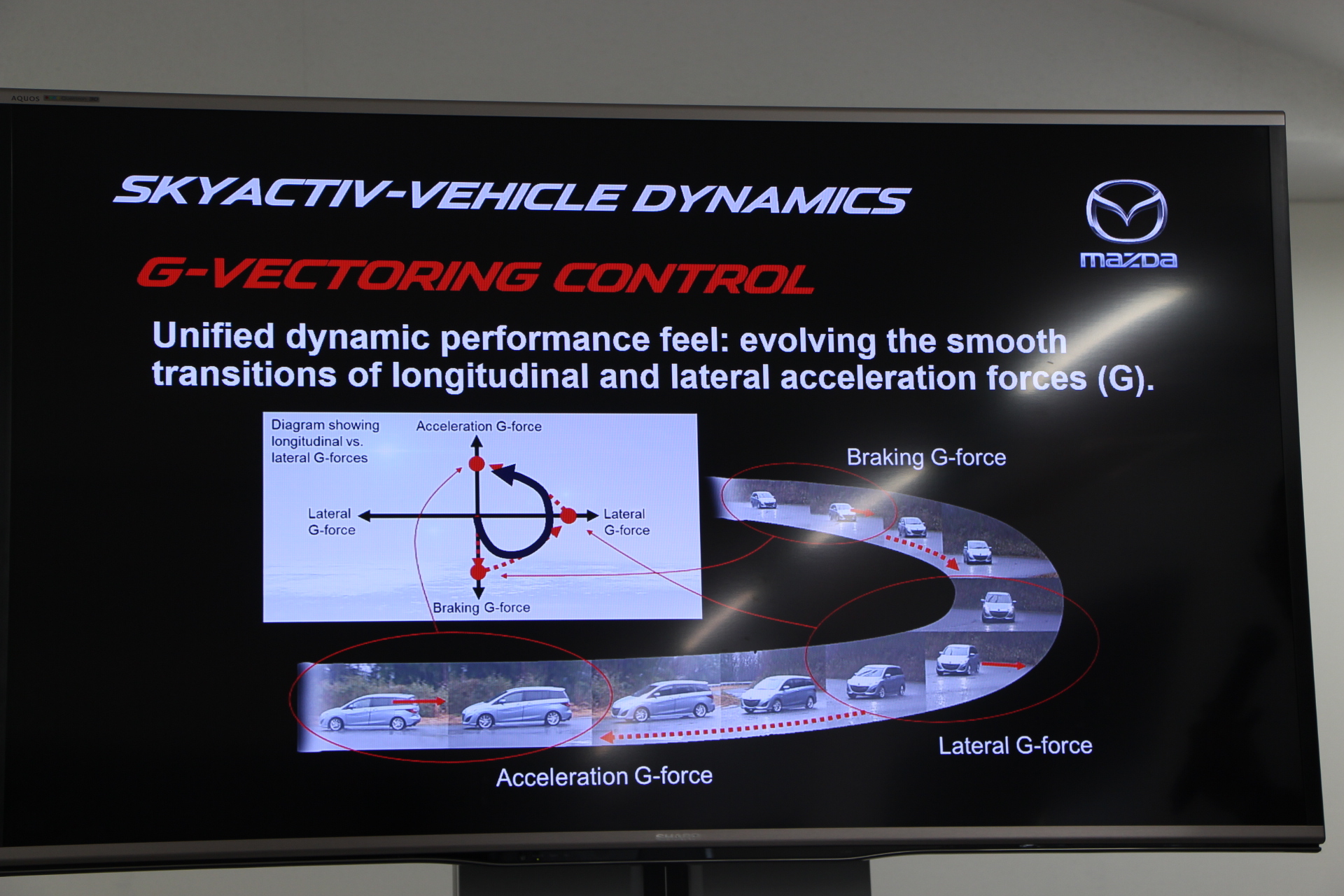
2. GVC: G-Force Vectoring Control – It’s going to change the world. Well, maybe not the world, but definitely how you ‘feel’ when driving a new Mazda equipped with GVC. In non-technical terms, GVC monitors all elements when the car is on the move, especially in corners, and even takes into account pitch and yaw (front-back, side to side movement) and by way of clever electronics and even using the torque from the engine, is able to ‘smoothen’ the lateral and longitudinal forces normally associated with driving on twisty roads. This system is most noticeable for passengers at the back, who normally get thrown about a lot more than those up-front.

Furthermore, for those who have an inherent fear of ‘lifeless’ steering with no feedback (like me) GVC also maximizes tyre performance by focusing on the vertical load on the tires. This is made possible by GVC constantly interacting with both the SKYACTIV engine and SKYACTIV-Chassis, The moment the driver starts to turn the steering wheel, GVC springs into action and controls engine torque to generate a deceleration (subtle engine braking) G-force, thereby shifting load to the front wheels. This increases front-wheel tire grip, enhancing the vehicle’s turn-in responsiveness. Thereafter, when the driver maintains a constant steering angle, GVC immediately recovers engine drive torque, in 5 milliseconds, which transfers load to the rear wheels, enhancing vehicle stability. This series of load transfers extracts a lot more grip from the front and rear tires, thus improving vehicle responsiveness and stability according to the driver’s intentions.

We were allowed to test how GVC works in the real world too, thanks to a day of driving at the Mazda MINE Proving Ground in Yamaguchi, Japan. In order to fully gauge just how GVC benefits driving, we all took turns being drivers and rear-passengers. To be honest, I felt the inherent benefits of GVC more as a passenger than as a driver. Indeed, being somewhat prone to motion-sickness if I’m not the one doing the driving, in the back seat of a GVC equipped car I was not being thrown about as much as I was in the non-GVC equipped car, a previous generation Mazda3 with regular hydraulic-power steering. Now this may not sound like much to you as a driver, but believe me, your passengers/family are going to find this a revelation. In a later presentation video showing a passenger in the front seat of both types of cars, it was visibly apparent that even in the front seat, said passenger was ‘moving about’ laterally a lot more in a non-GVC equipped Mazda.
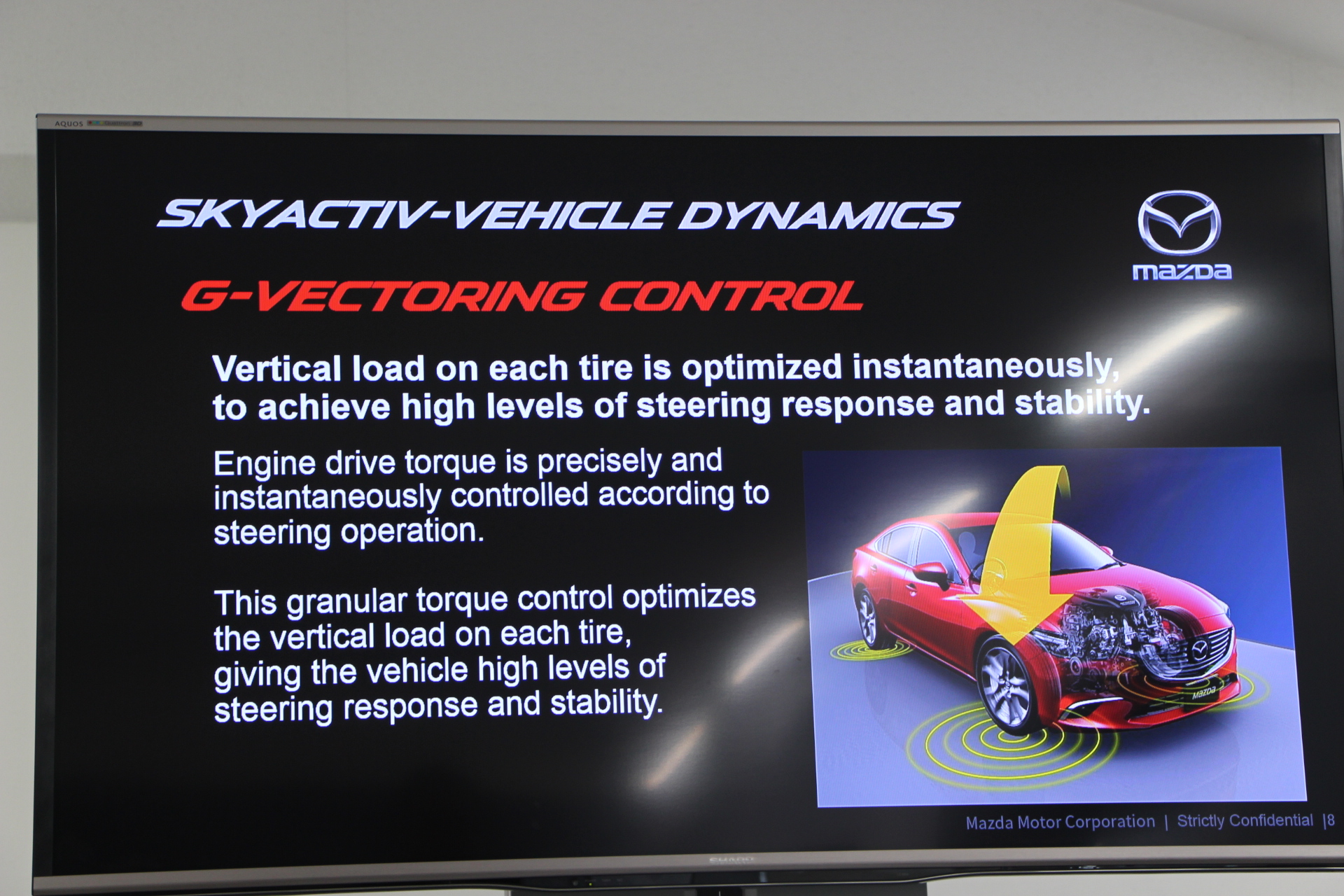
“GVC is only possible thanks to the existence of SKYACTIV engines, which enable precise control of drive torque, and the SKYACTIV-CHASSIS, which facilitates ideal vehicle behaviour. GVC is a highly versatile technology that can be deployed in any SKYACTIV model, irrespective of drive system or vehicle type. In addition, since GVC is a software control system, there is no weight increase due to the use of additional hardware components. Moving forward, Mazda plans to deploy GVC in most of its new-generation vehicles.” – Mazda.
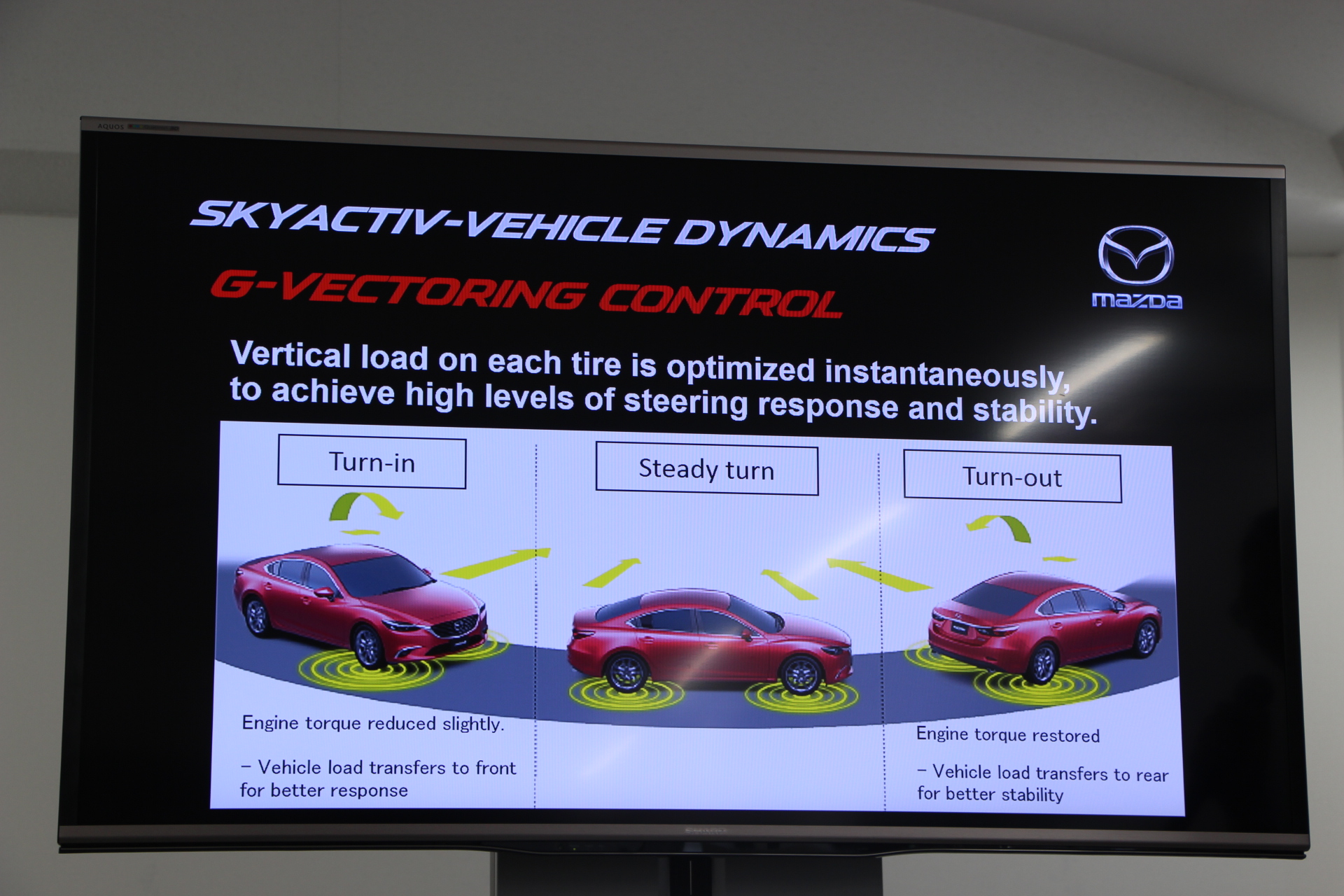
As a driver though, in Mazda’s own words, GVC makes you a more precise driver. “The driver operates the steering wheel to keep the vehicle within its lane whether driving in a straight line or cornering. However, due to irregularities and undulations in the road surface, the vehicle does not always travel along the expected line, (tramlining) forcing the driver to make corrections with the steering wheel. Since GVC provides enhanced response to slight steering wheel operations, it greatly reduces the size and frequency of steering corrections. This enables the driver to keep to his or her intended path with minimal corrections, giving a feeling of unity between driver and car and instilling greater driver confidence.”

In layman’s terms, GVC is constantly at work, adapting to the driving style and characteristics of the driver, all the time. Be it city-commuting, high-speed highway driving in a straight line, or even canyon-carving on a Sunday drive, GVC continuously monitors the driving scenario and adapts engine torque to the wheels depending on steering input, speed, as well as lateral and longitudinal forces during either easy- or hard-cornering, and coupled with the necessary input from the SKYACTIV engine, manages to enhance or retard the drive going to the wheels, depending on the given driving scenario.

3. SKYACTIV – The developments in Mazda’s SKYACTIV engines continue to impress, and having recently sampled the new range of SKYACTIV-D ‘clean’ diesel engines, it was time to see how they fared on track. Well, we didn’t come all the way to the MINE Proving Ground just to look at it did we? Despite being completely smitten by the Mazda MX-5 from our previous experiences with it, believe it or not, it was the diesel variants that proved to be the most impressive on the MINE track. Make no mistake though, the MX-5 is an absolute riot to drive on MINE, but that was to be expected. Getting behind the wheel of the diesel powered CX-3 and Mazda6 wagon though was a real eye-opener.
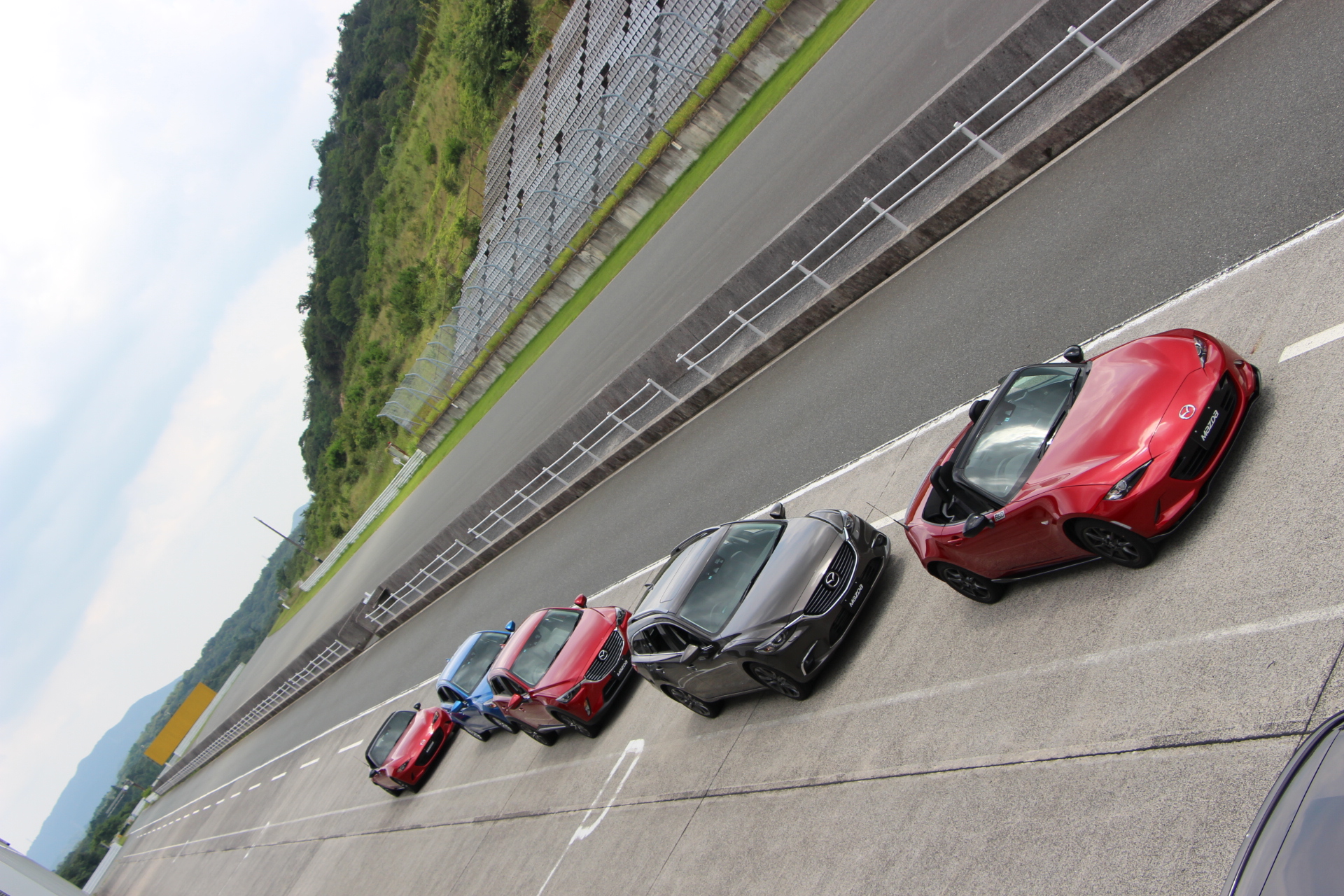
Because the MINE track layout is made up of more twists and turns than a Dan Brown novel, the low-end torque of the diesels proved ideally suited for this, so much so that I was actually able to keep up with the lead car and hound an MX-5…in a CX-3 diesel. It was able to hug the turns a lot better than I’d expected for a small crossover, and power – that came in surprisingly early from the SKYACTIV diesel engine – made for some very interesting point-and-shoot driving from corner to curve. It was likewise for the Mazda6 diesel too, and despite being a wagon, exhibited the exact same hooning capabilities. Even getting up on the rumble-strips while searching to the apex failed to unsettle this car, which for all intents and purposes had no business on a race-track.
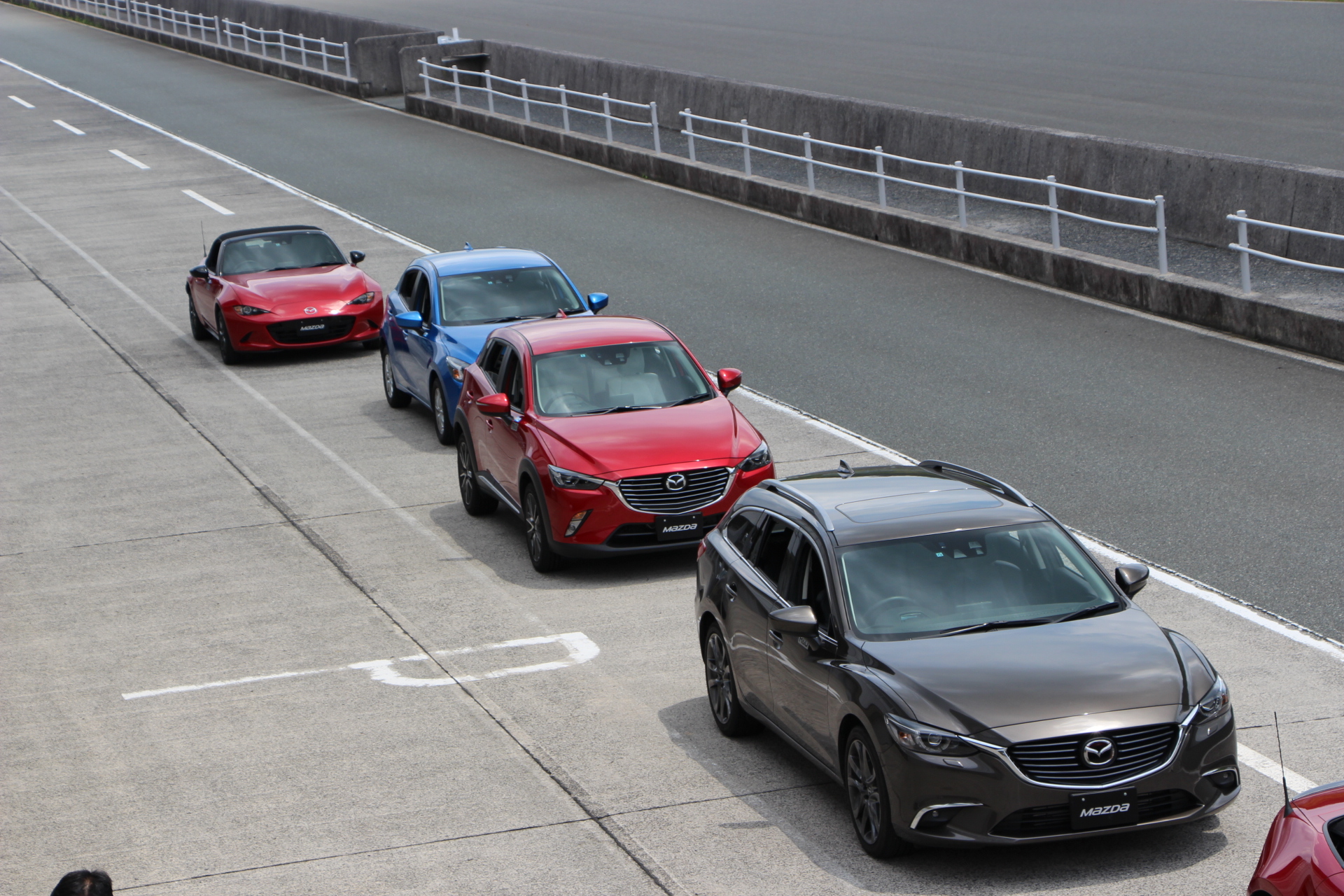
Three laps were allowed, but since I was in one of the last groups, we all had an additional lap each; I reckon the organisers had allocated more time than needed for this exercise, and didn’t realise we’d blaze through it so quickly. At the end of the track session, having sampled all the cars, I just happened to be in the MX-5 right behind the lead car, driven by one of Mazda’s pro test drivers, and whom I’d absolutely tormented for 4 blistering laps. He’d even put his car sideways a couple of times, and I could tell he was having a ball too. He actually came up to me at the end, and while expecting a Katana in the gut, he said haltingly “arigato, good…drive”, to which, with much relief, I shook his hand, bowed and replied the same.
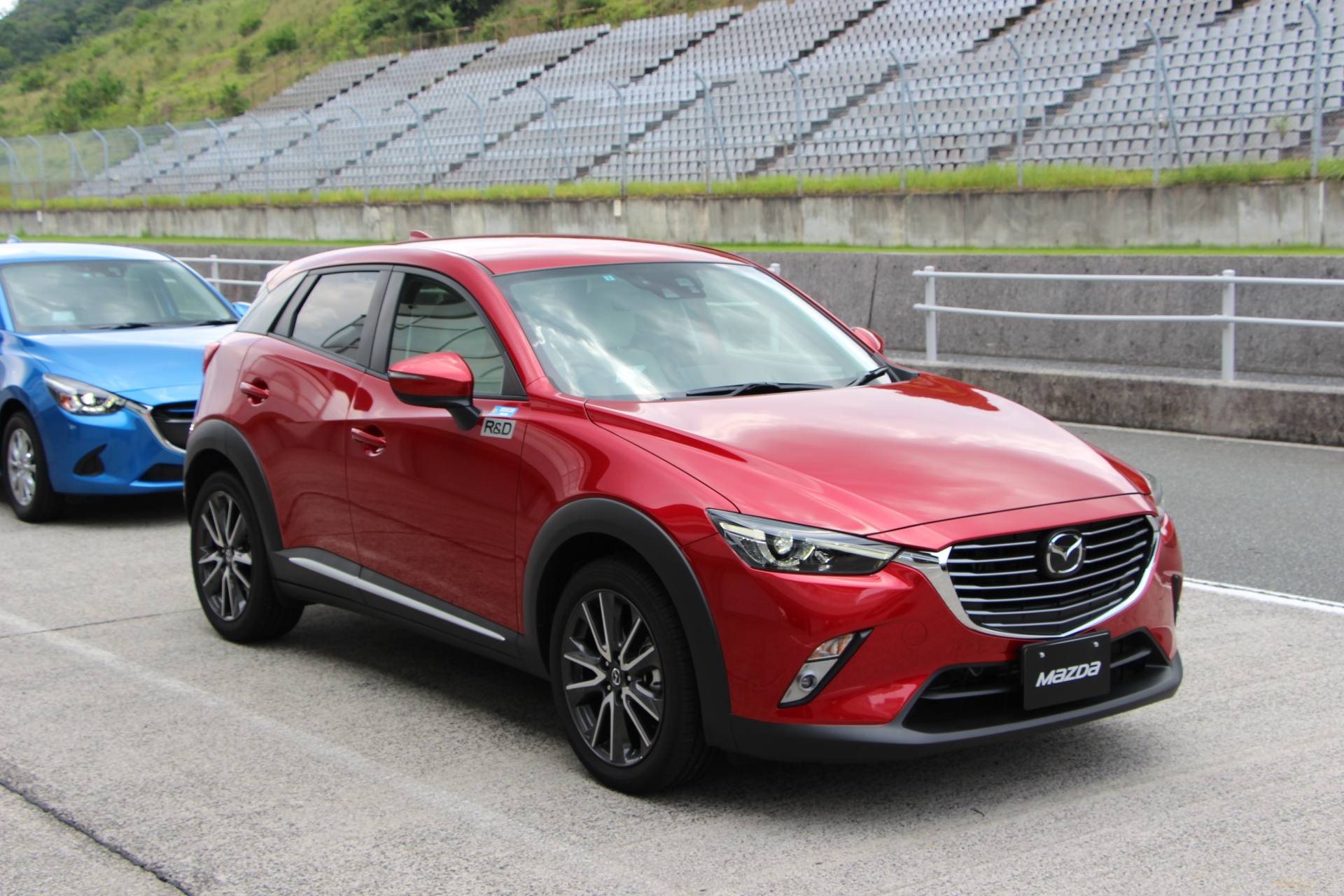
4. STYLING – I then took a step back and had a long look at the cars as they lay resting from what can only be described as a workout they’d never be put through in the real world. Lined-up there, with the sun getting low on the horizon, I came to the conclusion that this was not the Mazda I knew a decade ago. During the earlier presentation, by their own admission, even Mazda don’t see themselves the same way anymore. It’s a new direction, a new philosophy, a new way of thinking, on every level and then some. Even in terms of styling and design, Jinba-Ittai is prevalent. The ‘new’ Mazda’s are stylish and elegant, yet sporty and exciting to behold at the same time. They MAKE you want to go for a drive in any one of them. It’s true, I was ready to head out again at a moment’s notice.

It’s not just on the outside, but even the way a driver sits (above) in the car and what he or she ‘feels’ when driving has been taken into consideration. Better and more ergonomic seats are one thing, but also the driving position of the driver and his/her line-of-sight has been addressed. Using computer and real-world simulation, Mazda has even managed to ‘correct’ any wrong seating position in their cars, which ultimately leads to discomfort, pain, and fatigue. Three elements that make it impossible to enjoy the drive, any drive, be it daily-commuting, long-distance travel or a Sunday drive. Coupled with the aforementioned GVC, it makes driving a new Mazda something very special, very different.
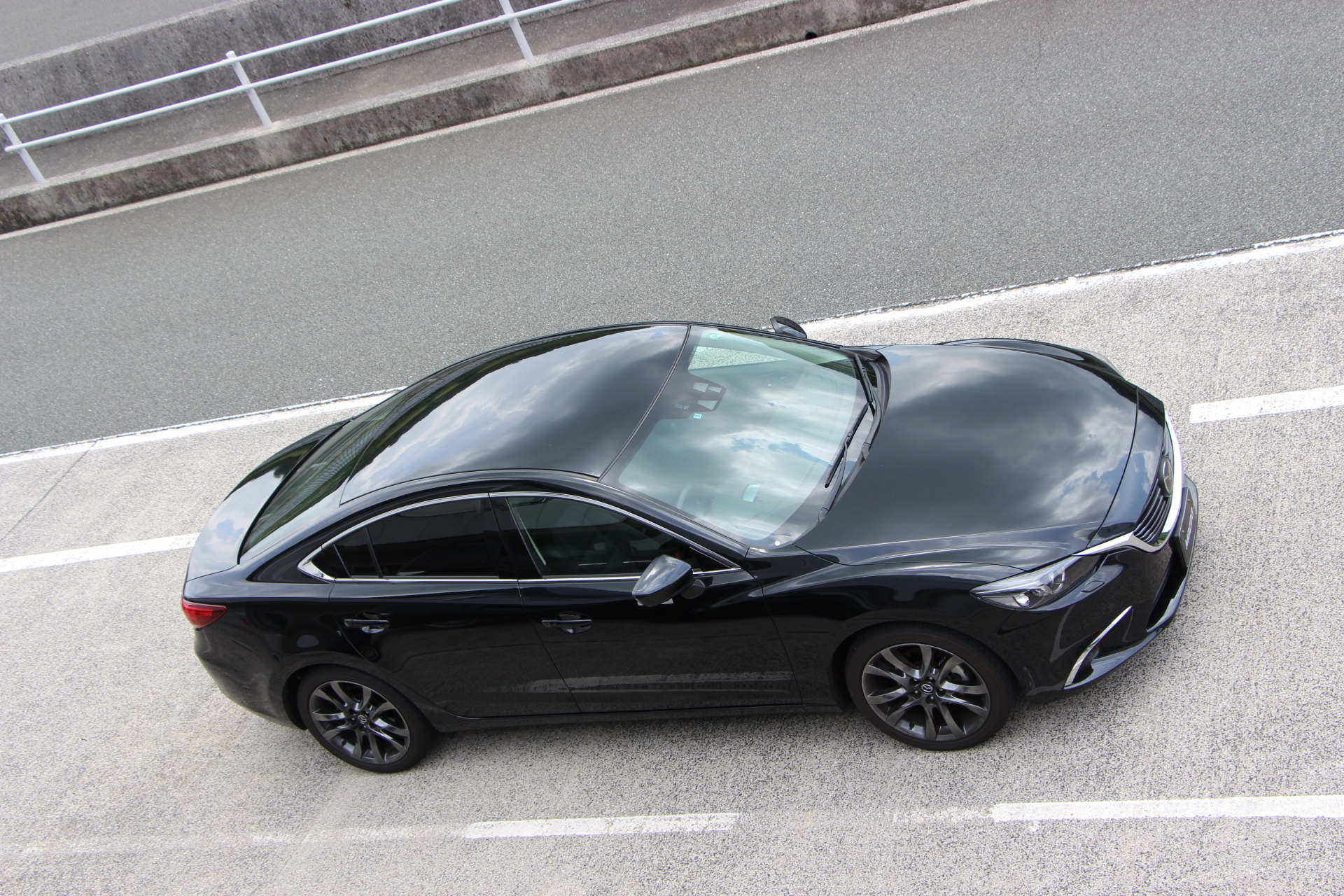
5. COMMITMENT – It was actually during the presentations – something that most motoring journos would rather get over with quickly and hit the track – that I finally understood the reason we flew more than 5,000kms. The amazing aforementioned technology that Mazda is shoehorning into their cars aside, it’s also how everyone who works for the brand ‘feels’ about the vehicles they are developing that’s truly impressive. Sitting there and listening to each presenter responsible for one aspect of product development explain to us what it’s all about, I could feel the pride and dedication each one felt for what they’d accomplished, and are continuing to strive toward.
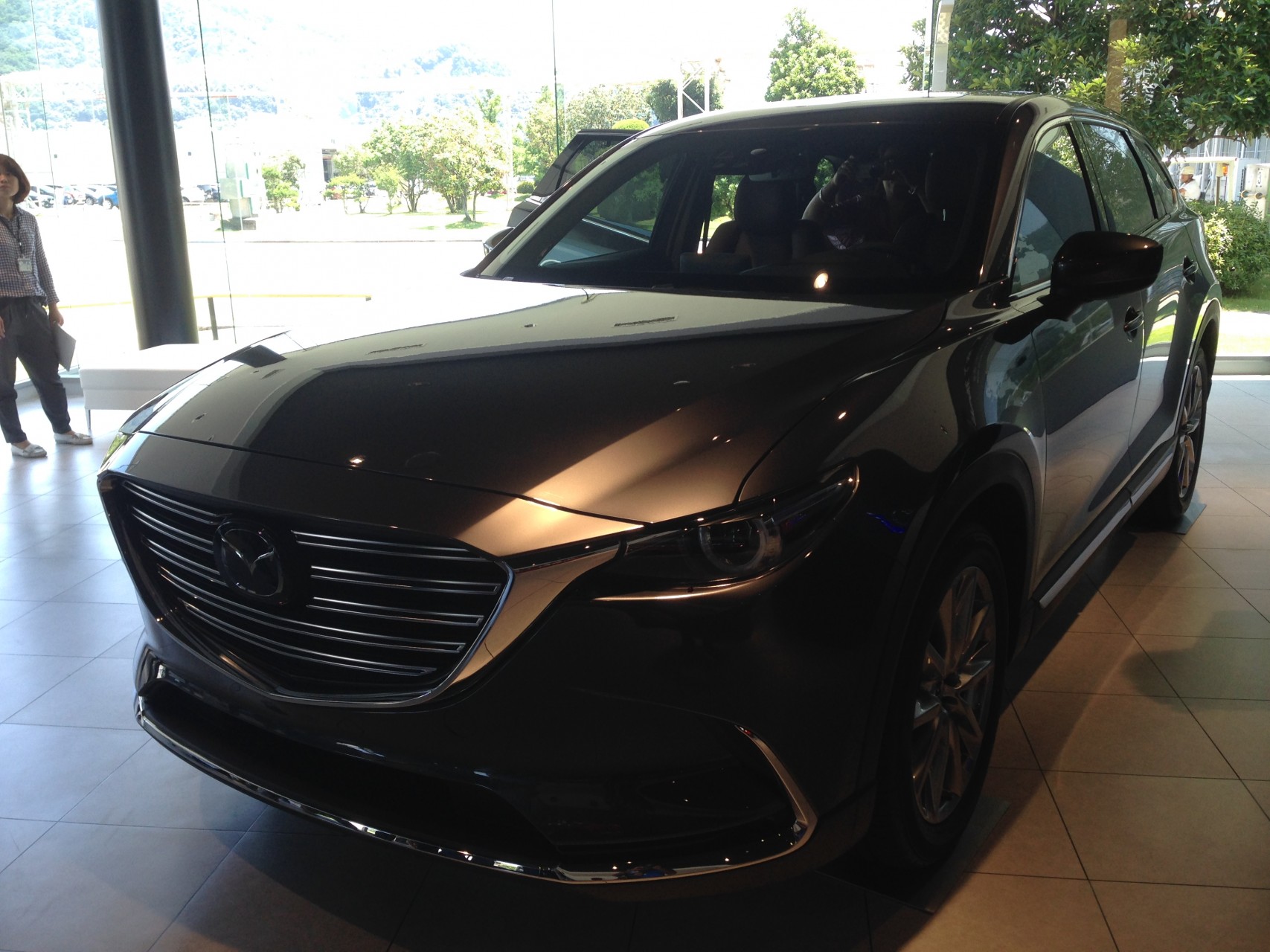
Even our local hosts from Bermaz Motor, the custodians of the Mazda brand in M’sia, as well as an old friend of mine who’s now the CEO of Mazda Philippines, there was a palpable sense of pride from all of them at what Mazda is doing these days. Truth be told, this was one of the hardest articles I’ve ever had to write, for as I said earlier, there was no brand new car, there was no actual launch, this event was more about a ‘feeling’, and how does one put that into words? The words are “Jinba-Ittai”, and there’s no need to take my word for it, you need to feel it and experience it for yourself. It’s called initiative. Mazda has it, Mazda’s taken it, and everyone’s going to be talking about it very, very soon. If they’re not already. – Chris Wee.
Photo Gallery…
Acknowledgement: AF would like to thank Bermaz Mazda, particularly Dato’ Ben Yeoh, our chaperones Ai Hoon & Mr.Soon (aka “Routerman”) and Sharon & Shaowen for the invite to experience “Jinba-Ittai” in Japan for ourselves recently, it was truly an eye-opener in the best possible way!
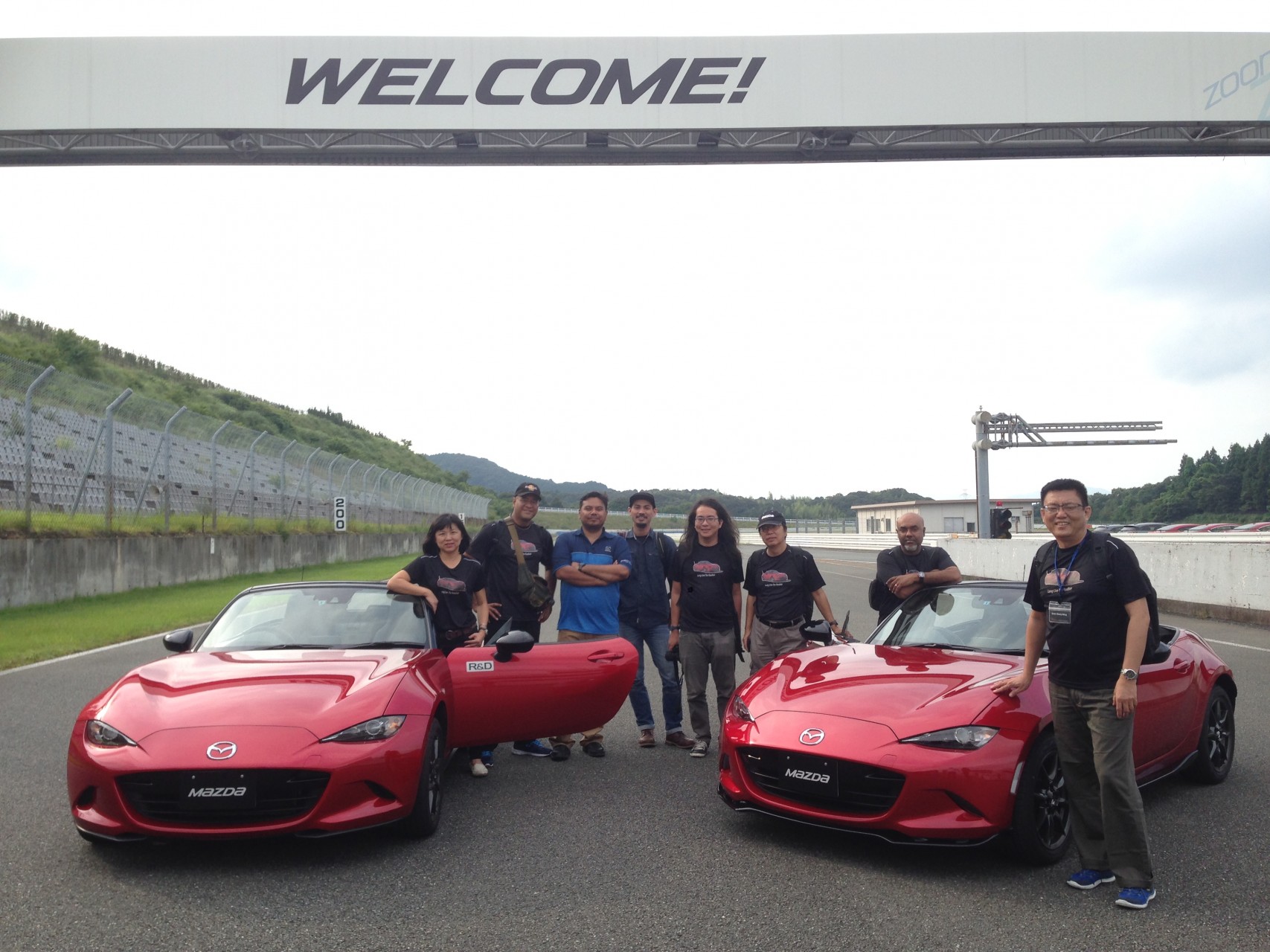
Other posts by Chris Wee

